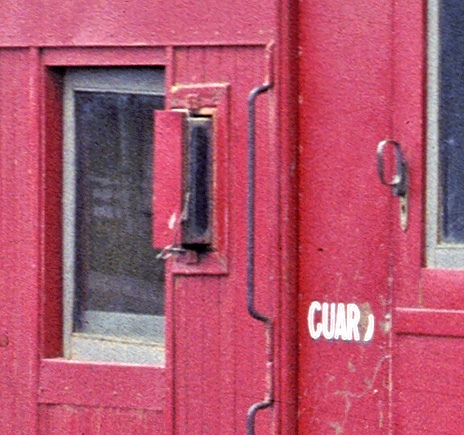PL cars
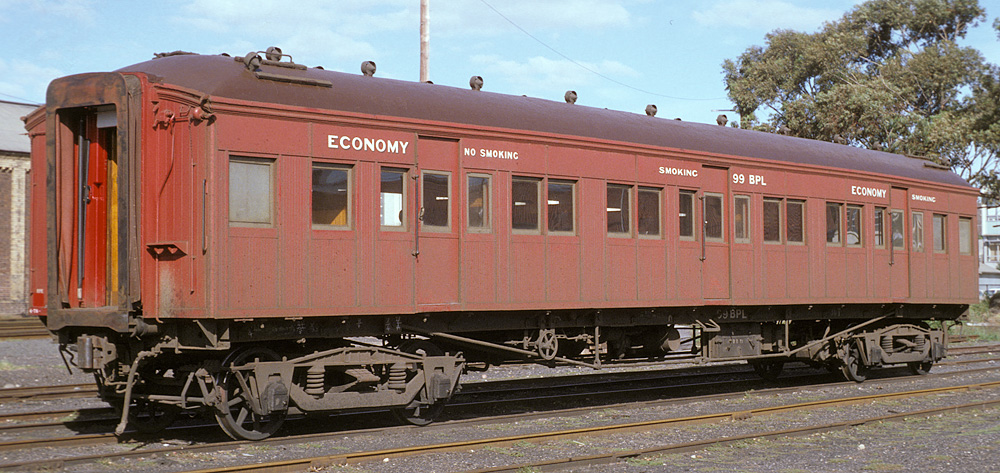
After Melbourne’s railways were electrified, the VR ended up with a dire shortage of passenger carriages. This was because many of the existing carriages were converted to standard suburban electric cars.
To bear the extra weight of the electrical equipment, those converted to Motor Carriages were provided with new underframes. Owing to the surplus of extra frames this created, a decision was made to re-purpose many of them by reusing and extending the 45’ and 50’ ones. There was some variation in the finished lengths; being 58’ 0¼”, 58’ 6¼” and 59’ 9”, with the extensions spliced onto one end. New bodies were built to suit, commencing in 1918.
The result was the PL series of cars. They were sometimes called excursion cars, as they were used in times of extra demand and for shorter trips, especially to the peninsula. The inside of these cars was very similar in design to the Tait cars, with a full length central passageway and no separate compartments, but they were provided with toilets.
They were built at the Newport Workshops and at least 12 ‘Butty gangs’ were also involved in their construction.
Initially they were classified as either APL for first class, (86 cars), or BPL for second class, (55 cars). At the beginning they were built with sliding doors, which were found to be very draughty. Subsequently, later builds were provided with hinged doors. Over the years there was much re-coding and re-numbering of many cars in this series, (APL to BPL and vice-versa), but during the 1960’s, all were all classed as second class. All were taken out of service by the early 1980's.
Over a three year period at the end of the 1950’s, the PL cars were retro-fitted with end vestibules to allow for communication between carriages. It is surmised that this would have coincided with the coupler transition from link to automatic, removal of buffers, replacement of the original 6’ 6” bogies with those of the longer 8’ 0” wheelbase and the fitting of the passenger communication apparatus and handbrakes.
During the 1960’s, axle driven electric generators were progressively fitted, along with equipment cases containing storage batteries and new incandescent light fixtures. This replaced the Pintsch gas lighting system, which was originally installed across the series. The control valve for the gas lighting was fitted externally on one end of the carriage. It is not known where this was relocated to, when the vestibules were installed.
There have been a number of subtle variations in PL car details. Some of these are likely to be related to the vehicle length and whichever butty gang was involved in the construction, although at this stage, no direct correlations have been identified:
1. Some have two windows each side in the end 'gendered' compartments, and some only have one. (It does appear that all those with two are amongst the cars of the longer length).
2. Some have sides lined with vertical timber boarding, while others are clad with metal sheeting, pinned along the bottom. (The metal was not a retrofit, as shown in early photographs of both APL 1 & BPL 1).
3. Some of the timber sided cars have a plinth cover strap along the bottom, while others don't.
Other variations, generally reflecting modifications and alterations, included internal horizontal bars across the windows in the end 'gendered' compartments and external horizontal bars across all other opening windows.

ABOVE: APL 1 was built April 1918 but was soon re-coded and re-numbered to BPL 61 Dec 1921. (official VR photo)
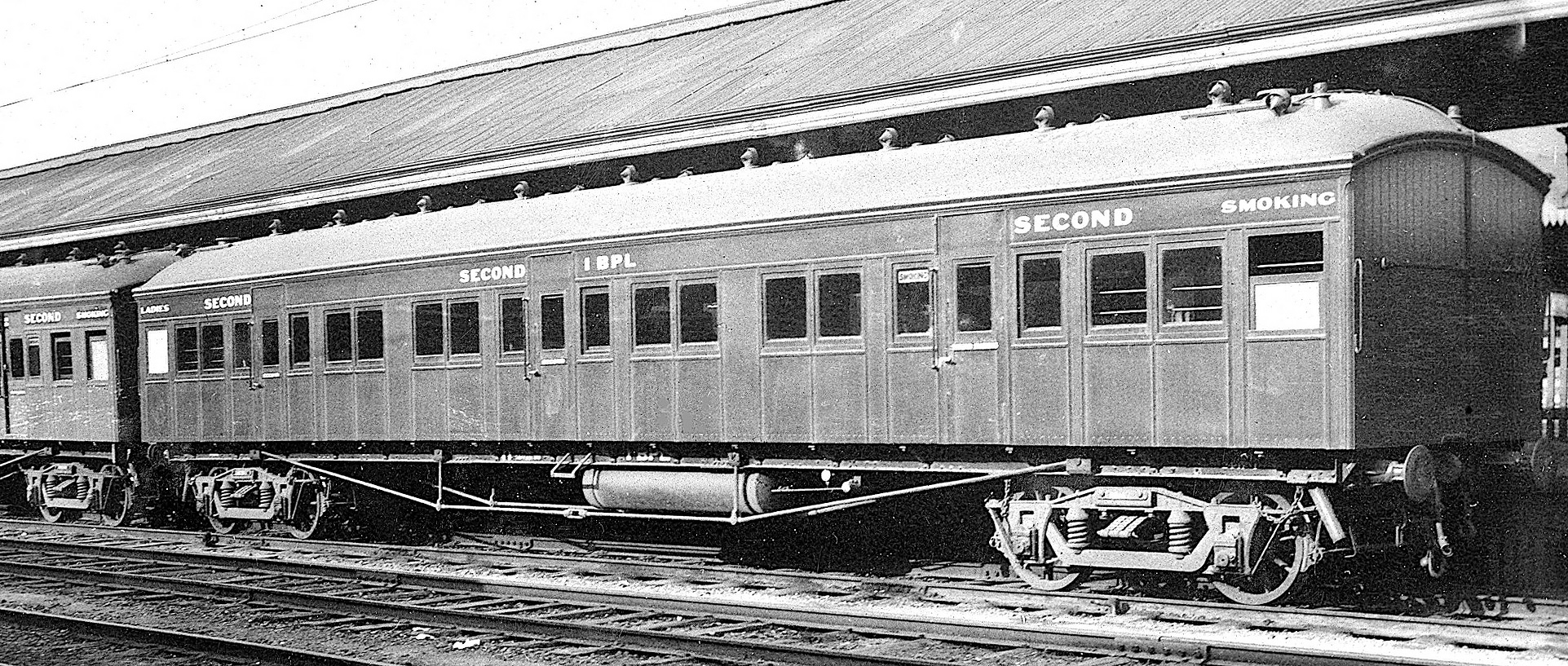
ABOVE: BPL 1, built new Dec 1919, photo shows the car without vestibule connection which was installed in Aug 1958.
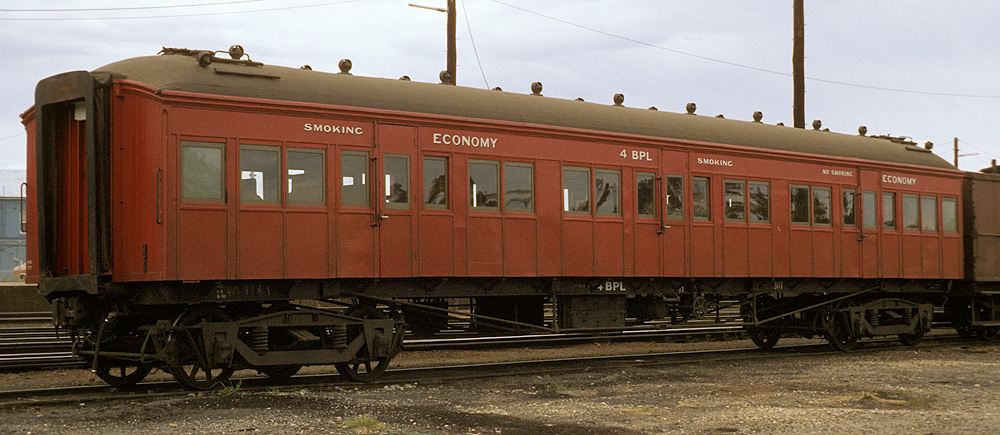
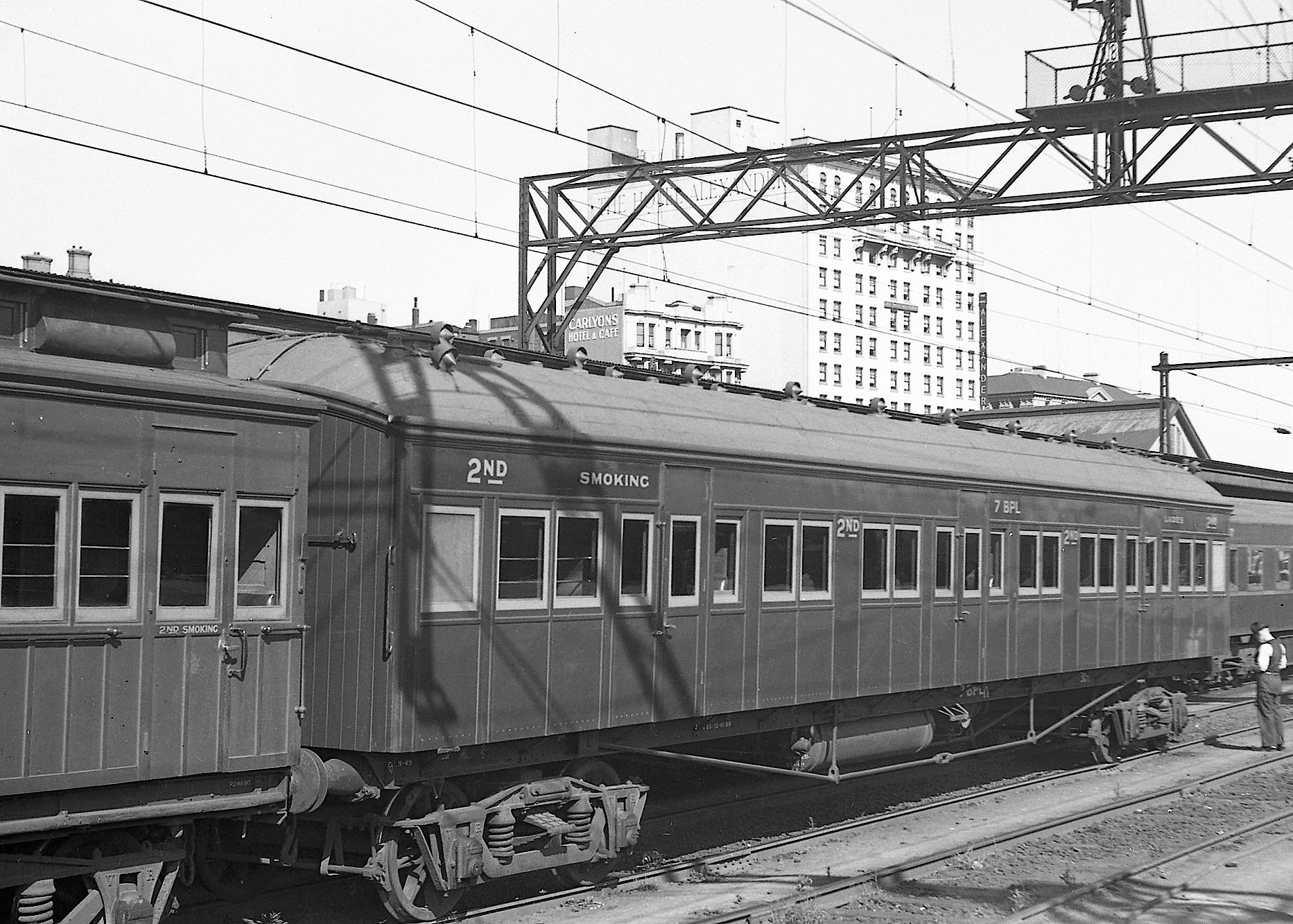
ABOVE: BPL 7 at Spencer St, circa mid 1950s (photo courtesy Brian McClure)
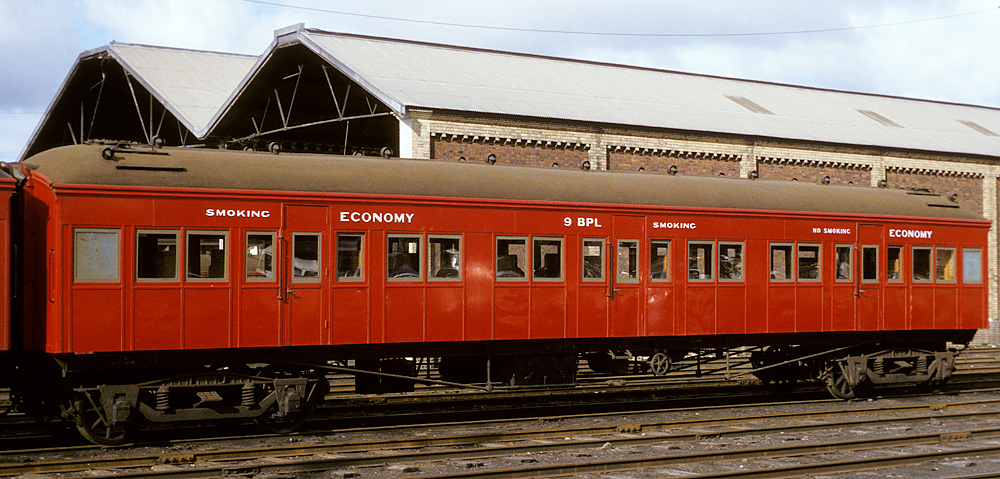
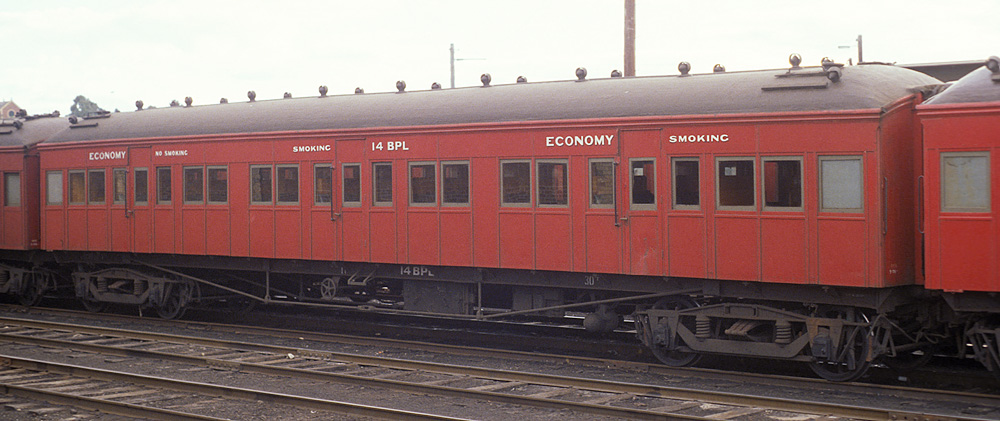
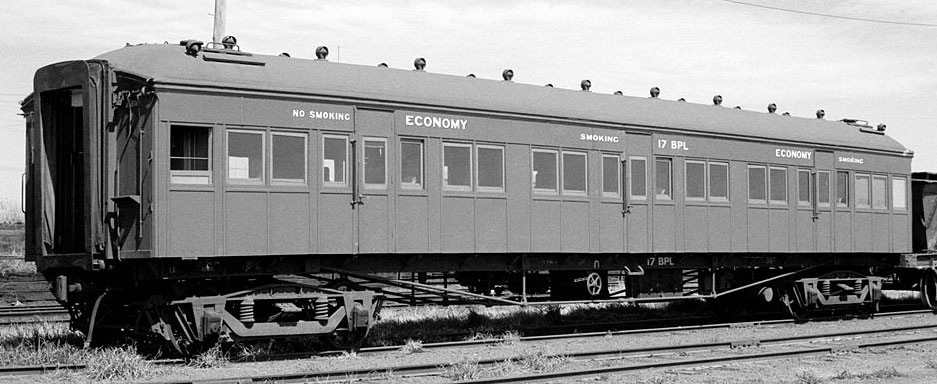
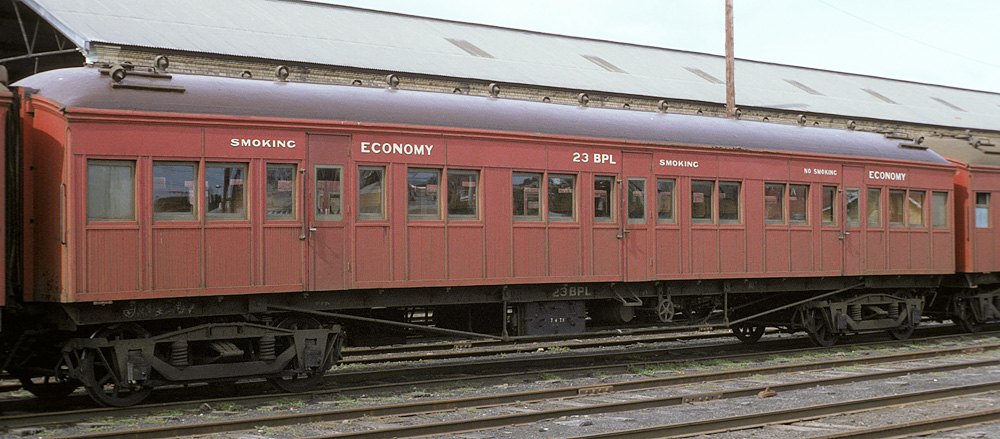
ABOVE: BPL 23 at Geelong, 1978, (photo courtesy Geoff Winkler) BELOW: BPL 23 at Newport workshops, about to be scrapped, 1982.
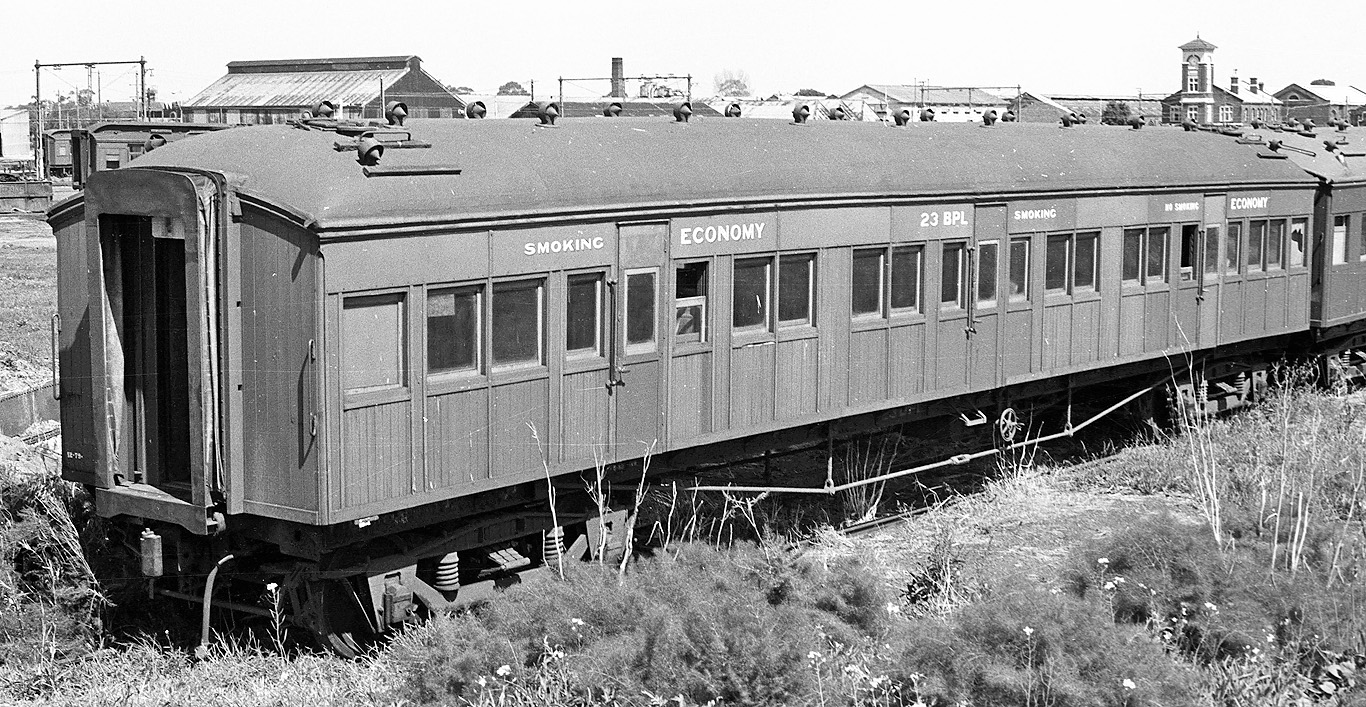
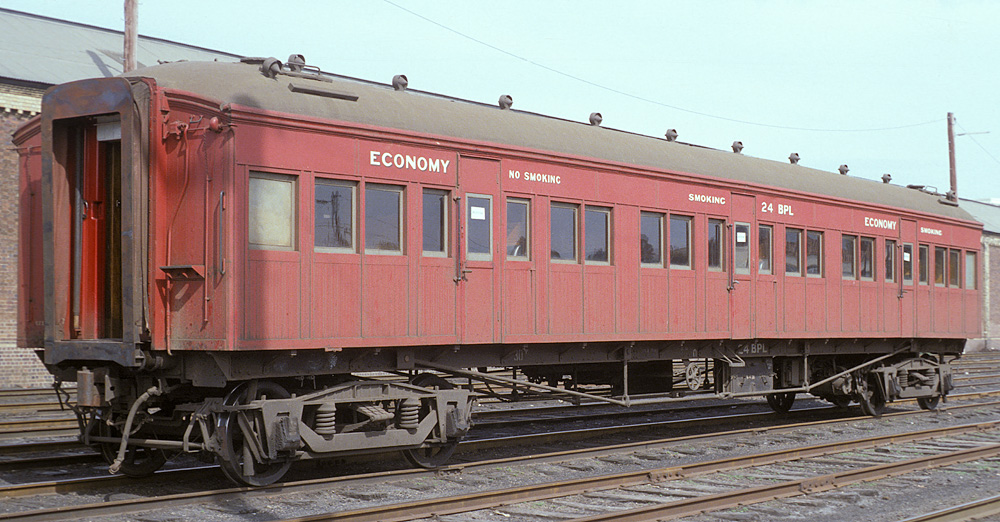
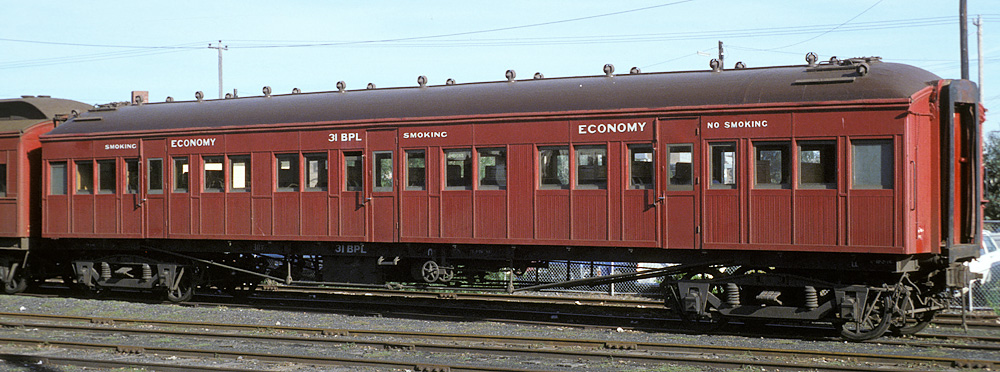
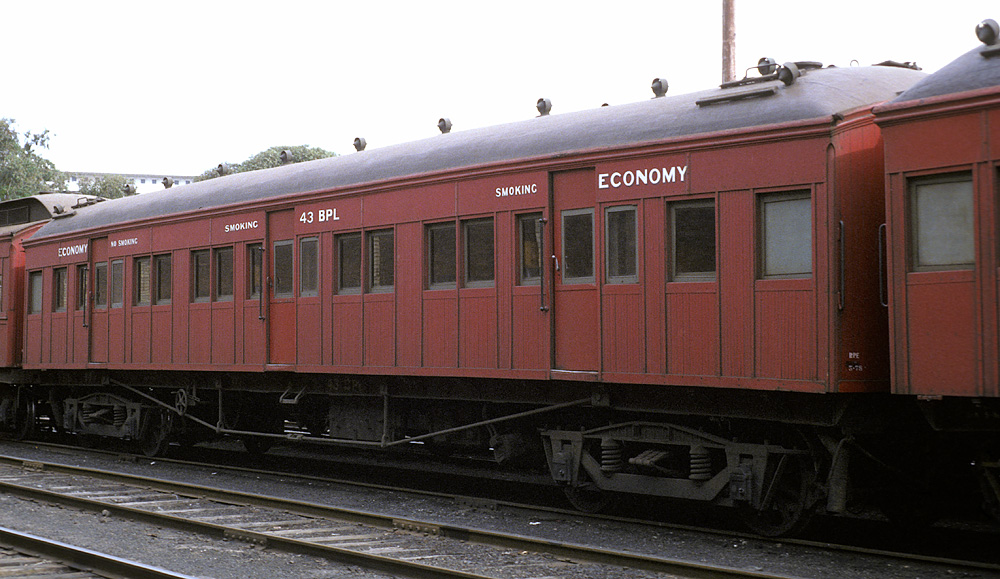
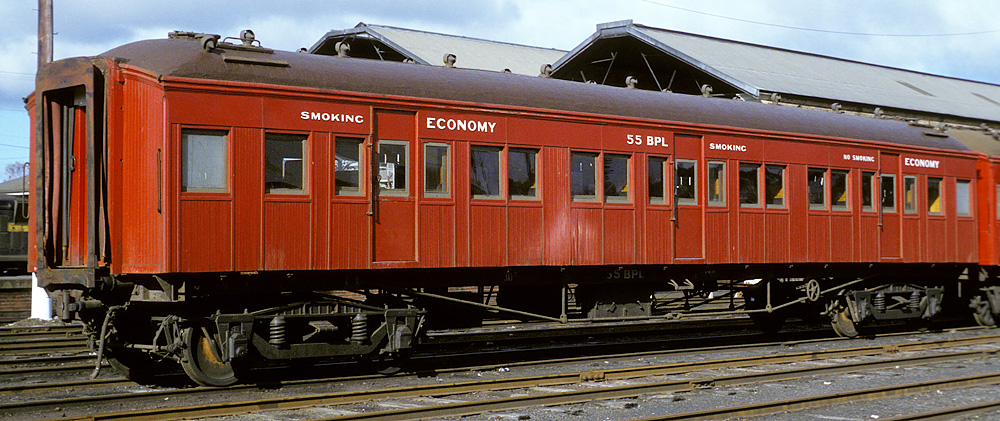
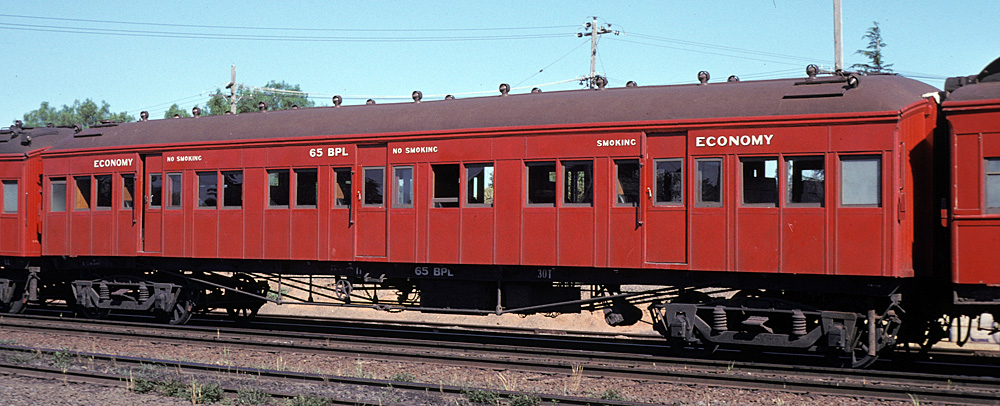
ABOVE: BPL 65, photo date Jan 1982. (photo courtesy Rob O'Regan)
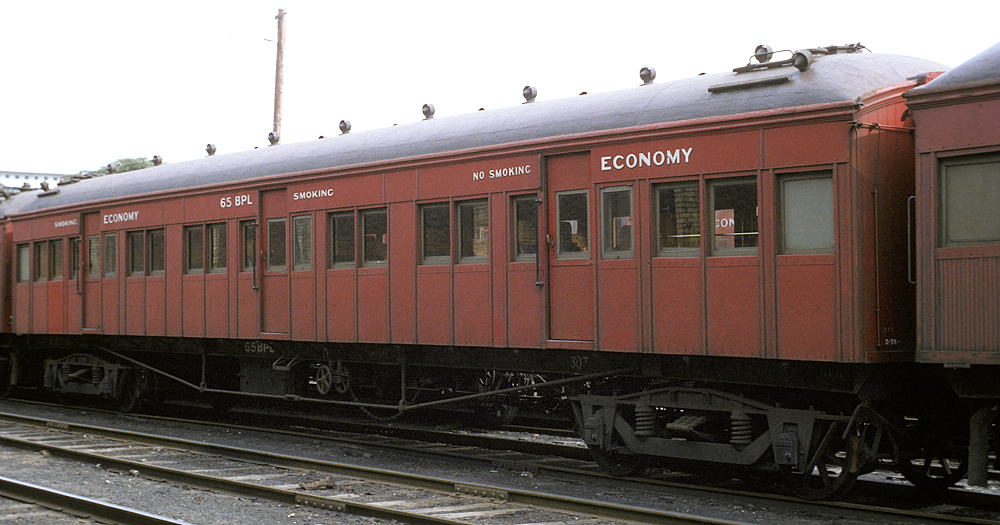

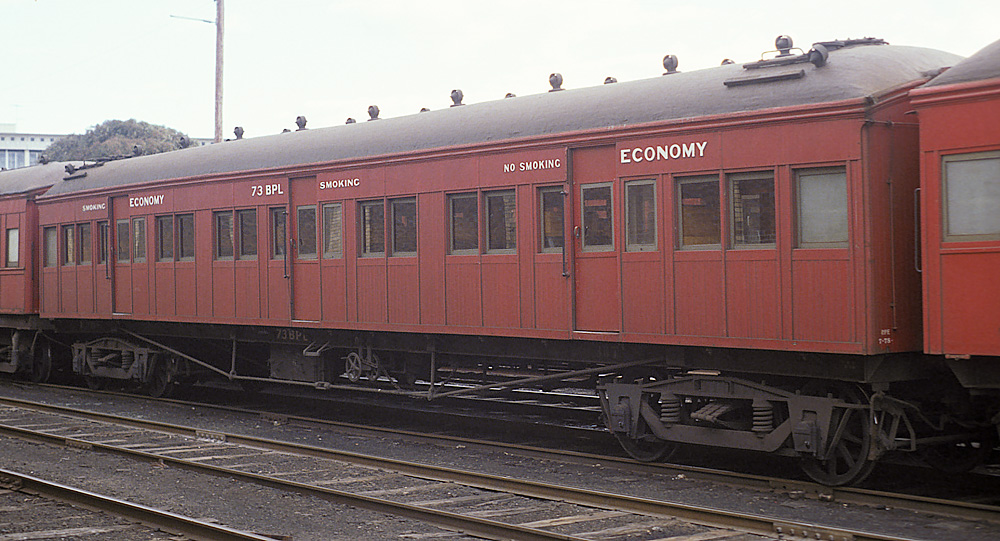
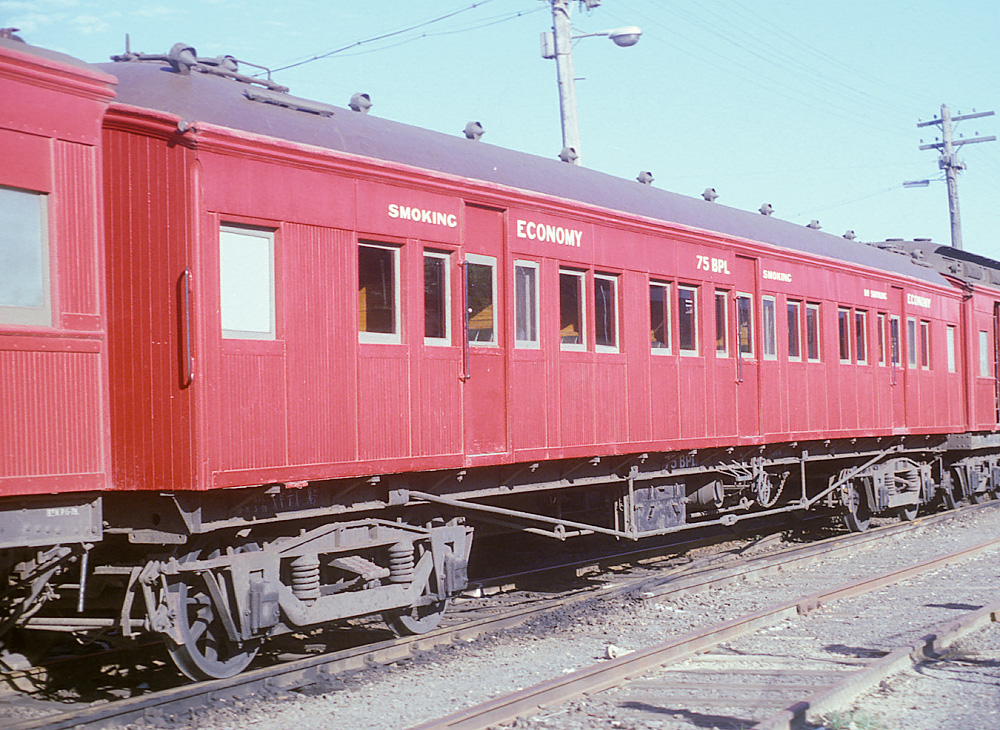
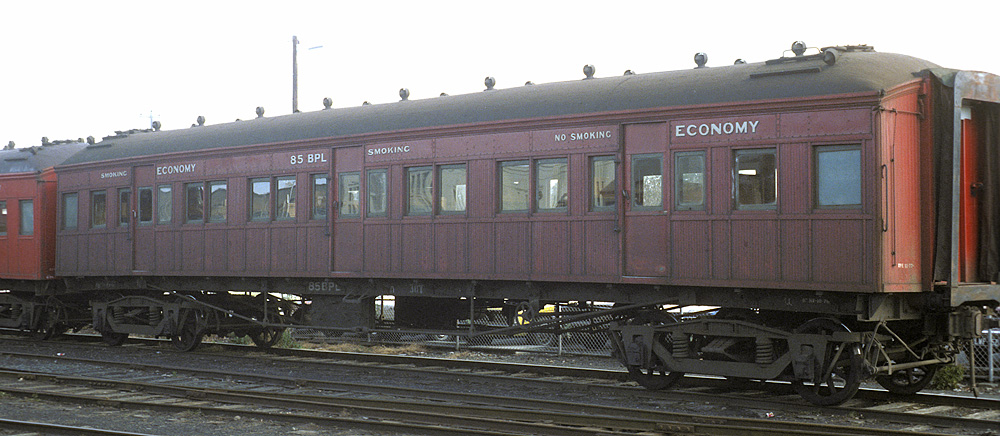
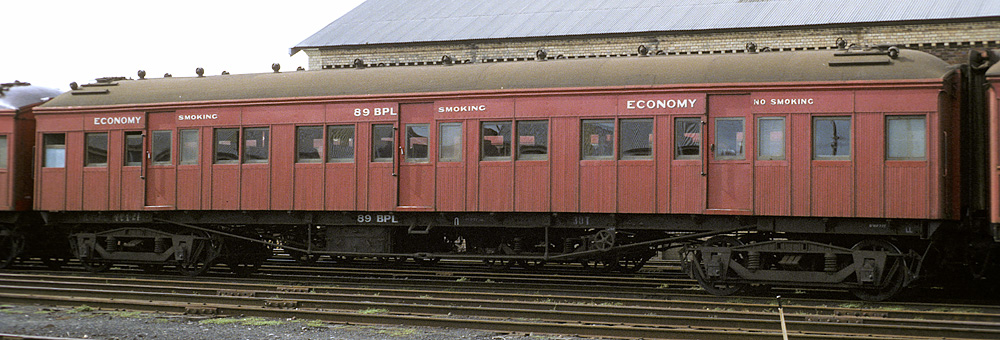
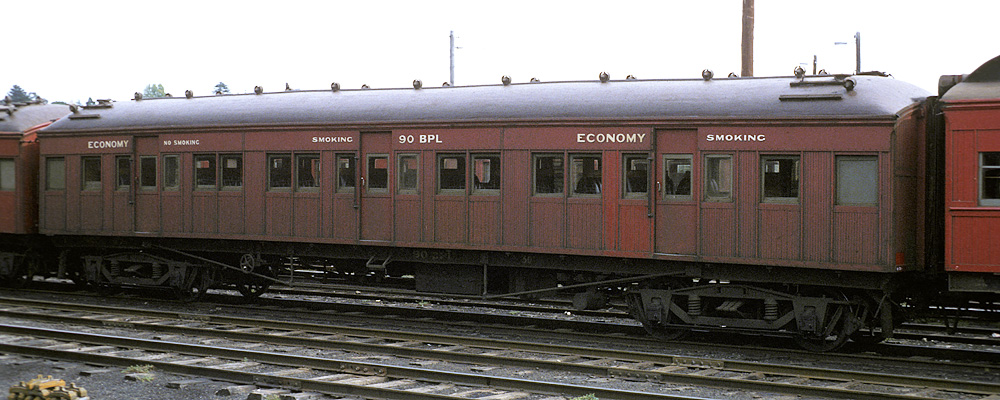

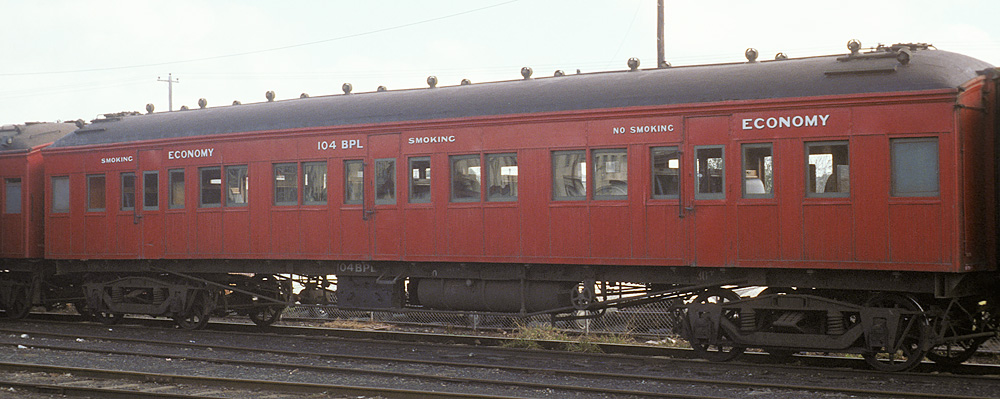
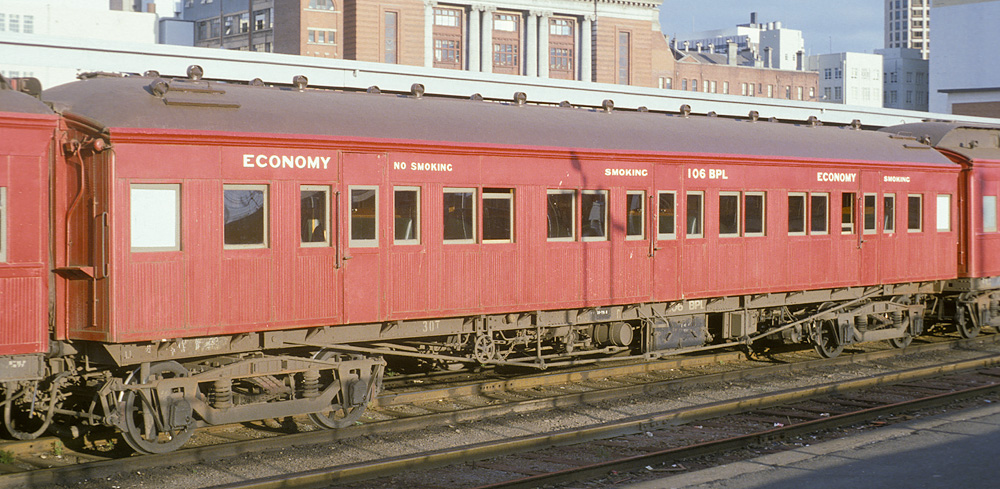
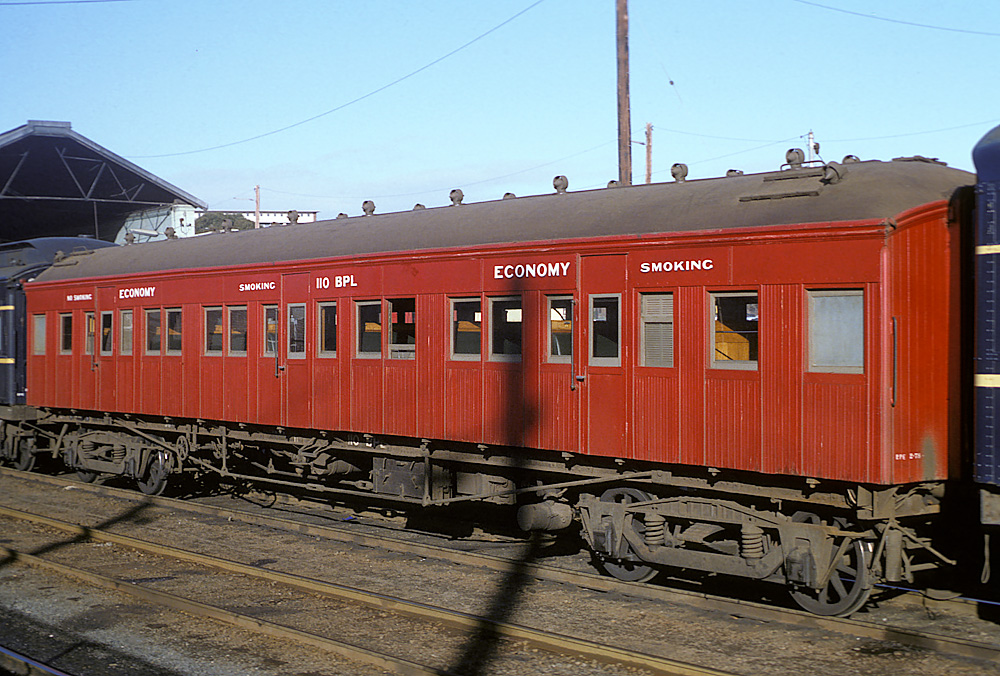
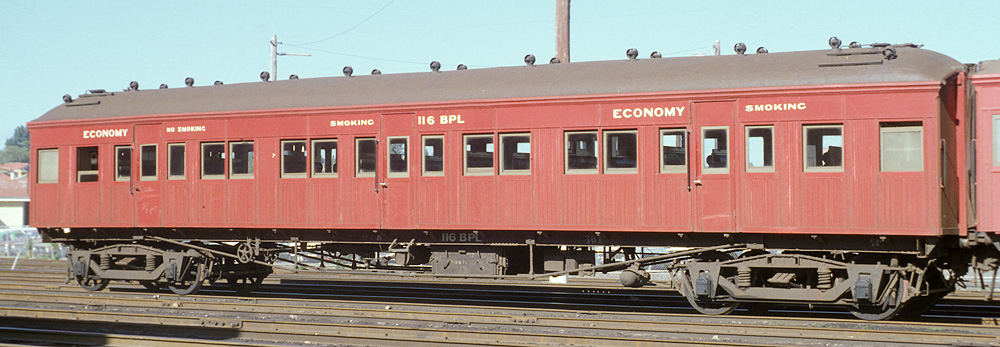
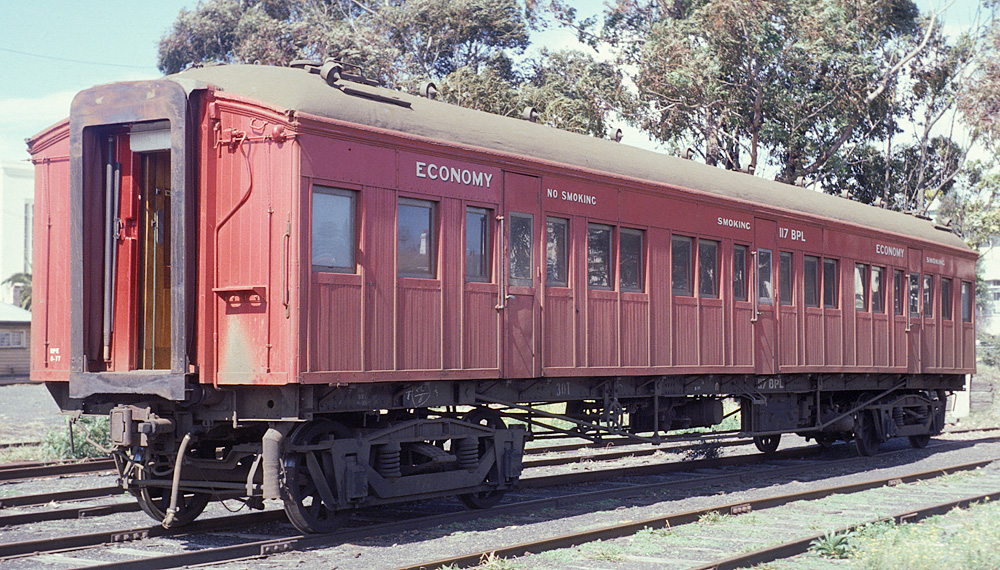
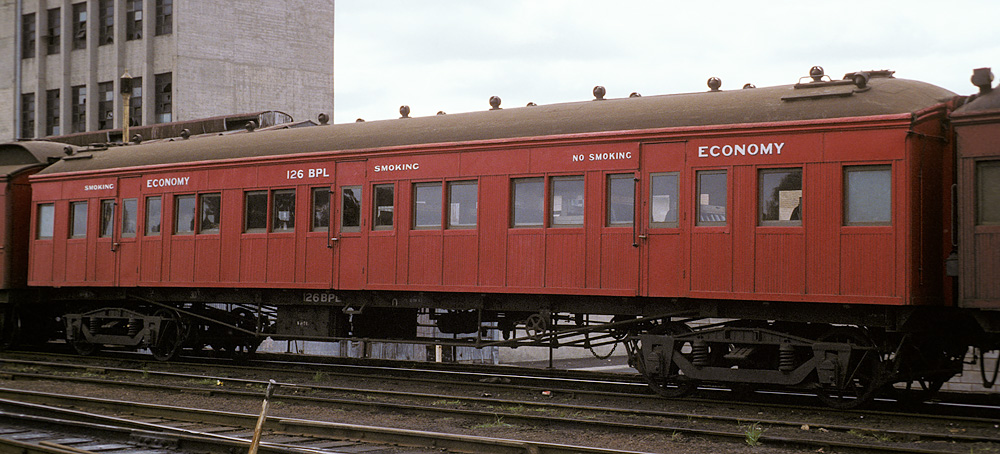
In 1939, carriage 82BPL (sliding door, previously 26APL) was withdrawn from service for conversion to a hospital carriage. The carriage had its seats removed and replaced with thirteen triple-bunk beds for a capacity of 39 patients. Externally it was painted all-over moonstone grey, as used around the windows of electric suburban trains. A red cross on a white circle was painted on the roof, and large red crosses were applied on the sides of the carriage between compartments 3/4 and 5/6.Internally, everything except the floor, light fittings and beds appears to have been painted white. The car proved to be useful in service, and so in 1941-42 a further ten BPL cars were converted. Cars 36, 38, 51, 58, 60, 72, 74, 75 and 98BPL became Hospital Cars similar to 82BPL, except that they were fitted with only twelve triple-bunk beds (36 berths), as well as 24 lockers for personal belongings in each car, and they were fitted with end diaphragms Additionally, 57BPL was converted to a staff car with end diaphragms, though not much is known about its internal configuration. After the war was over and all of the troops had returned these cars were gutted and stored. These carriages were rebuilt into the Jubilee Train, celebrating 50 years since Federation. The carriages were repainted externally into green and “gold” and paired with locomotive N class 430, painted in a similar livery and fitted with a brass bell on top of the boiler. The Jubilee train was fitted internally with a series of displays of state produce and examples of achievements. It was run across most lines in both suburban and country areas to allow locals in 66 towns to view the displays. The train ran first to South Australia between July 30 and October 7, 1951. Following this, the train was transferred back to Victoria and continued its journey. After this the cars were returned to their normal seating configuration.
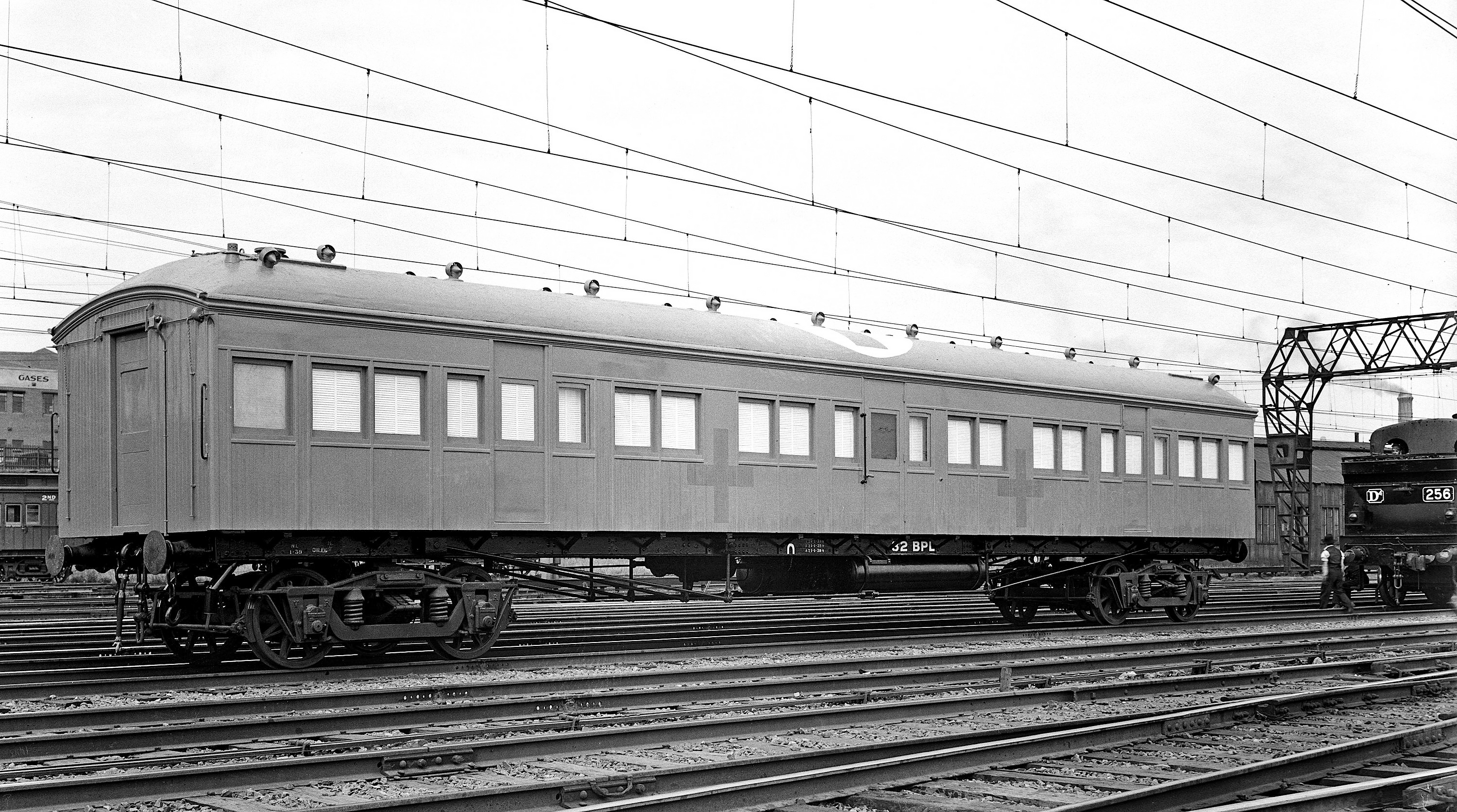
ABOVE & BELOW: BPL 82 having just been converted to a hospital car, early 1939.
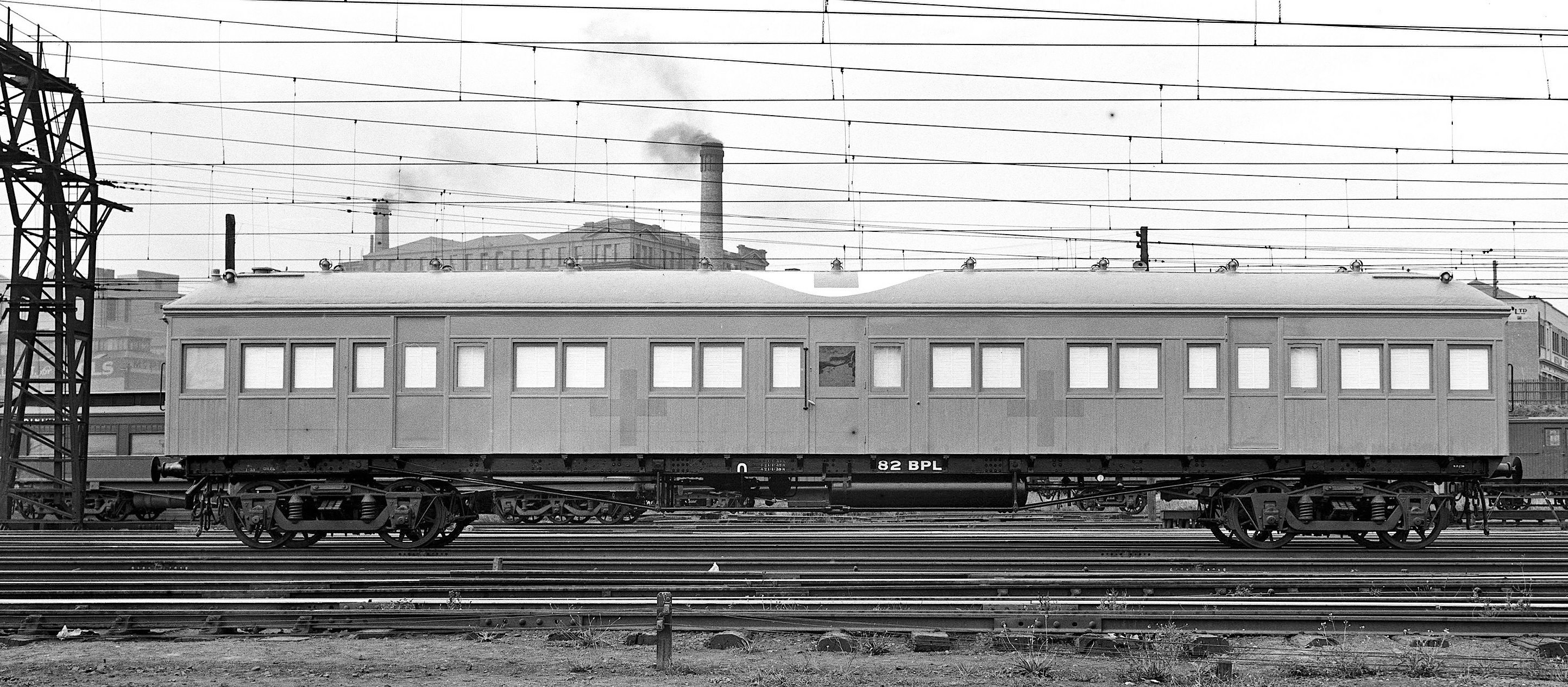
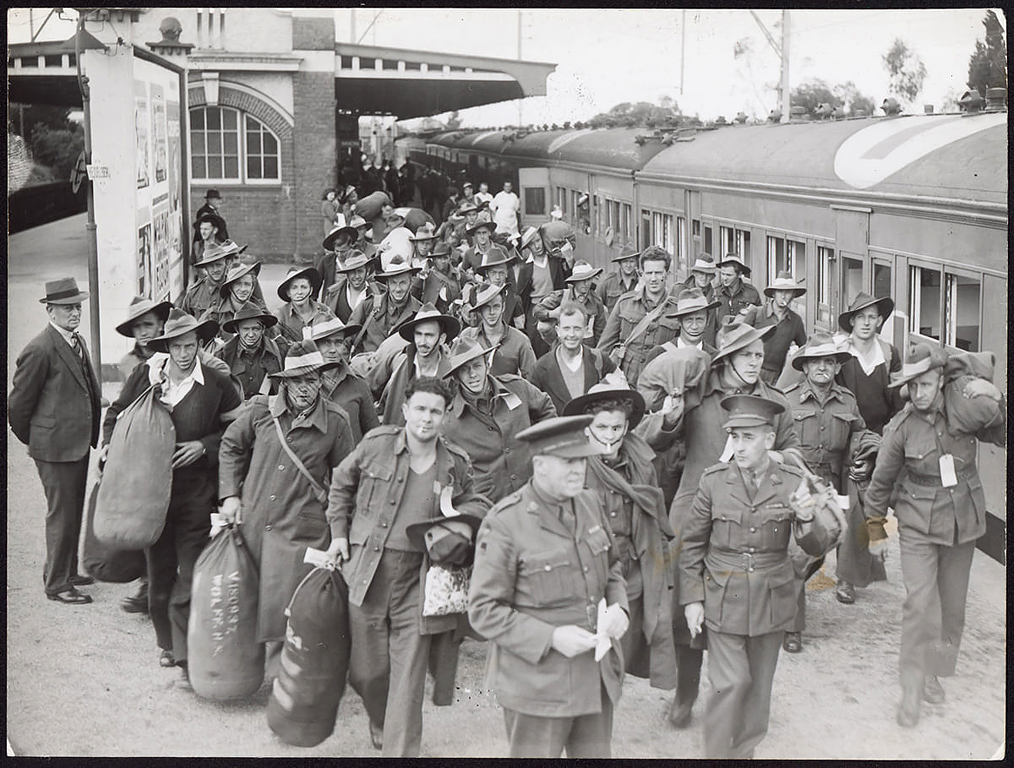
ABOVE: PL cars in hospital/troop train service at Heidleberg, 1940s. (photo courtesy State Library Victoria)
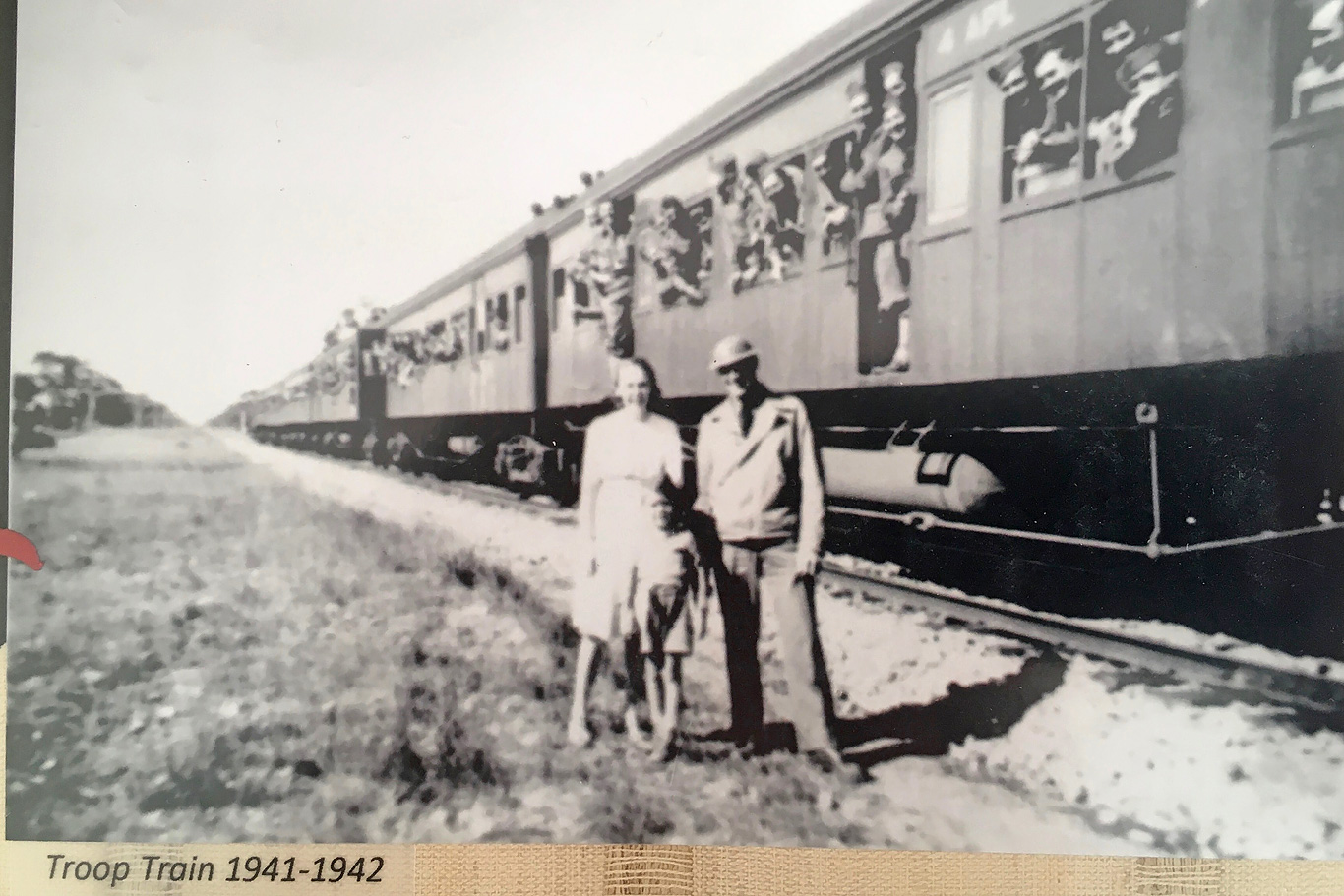
ABOVE: A WWII troop train at Keith, South Australia. The train appears to consist of all PL cars. (photo courtesy Des Jowett)
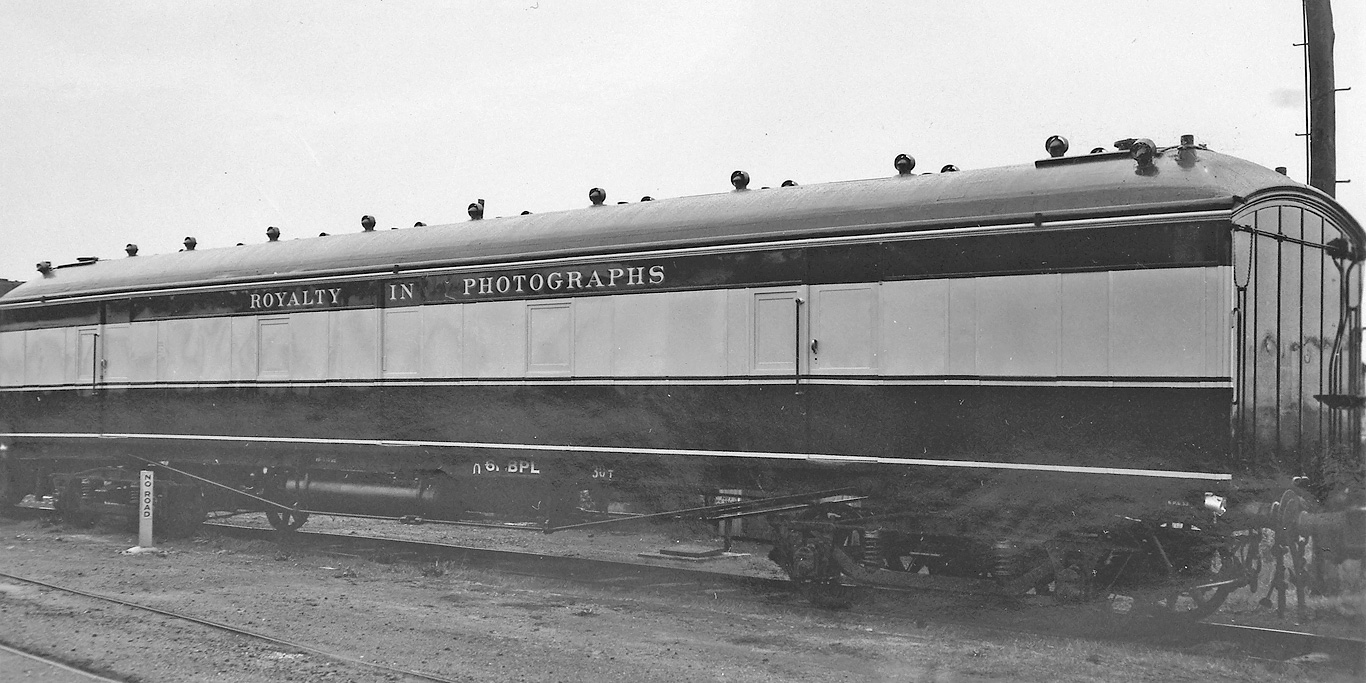
ABOVE: BPL 61, This photo is dated June 1953, the car was fitted out with a photographic display of the royal family. (official VR photo) BELOW: BPL 61 at Spencer St pass yard, mid 1955 (photo courtesy Des Jowett)
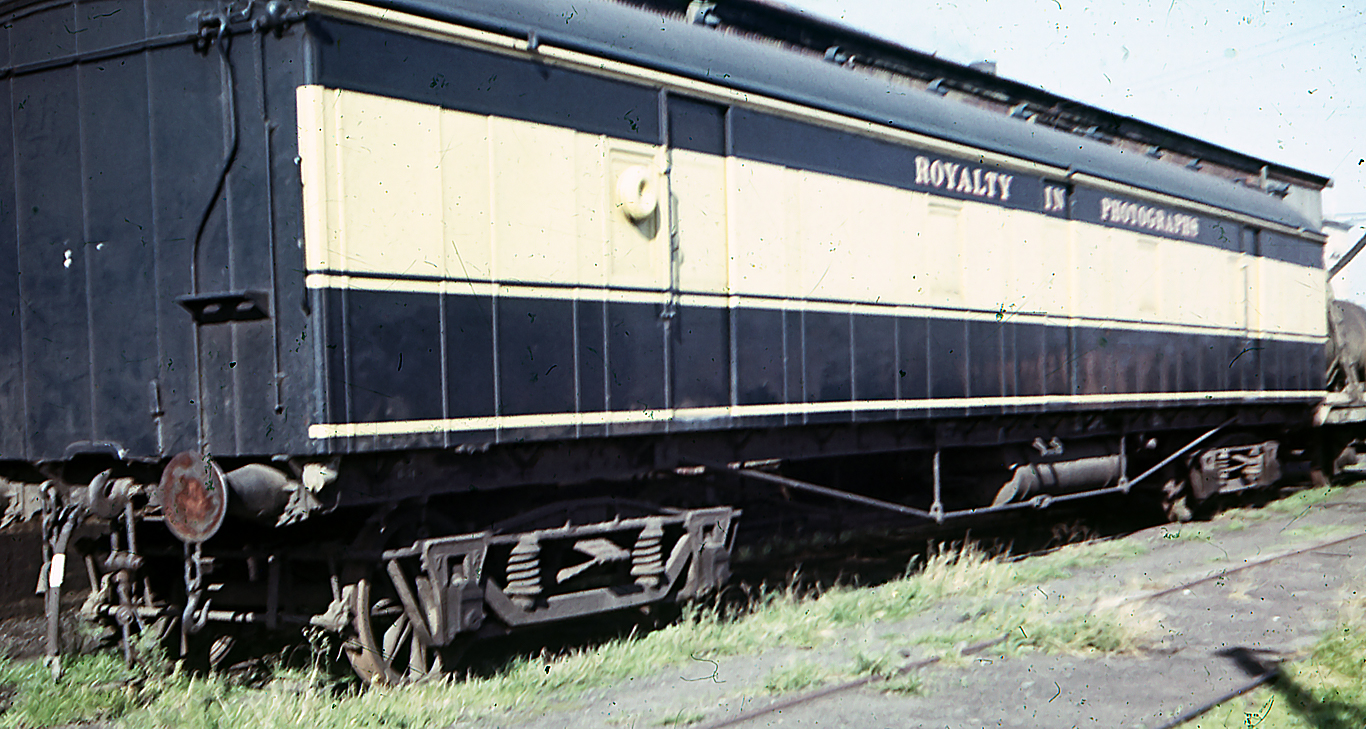
BELOW: Article from Aug 1953 VR newsletter. (courtesy Des Jowett)
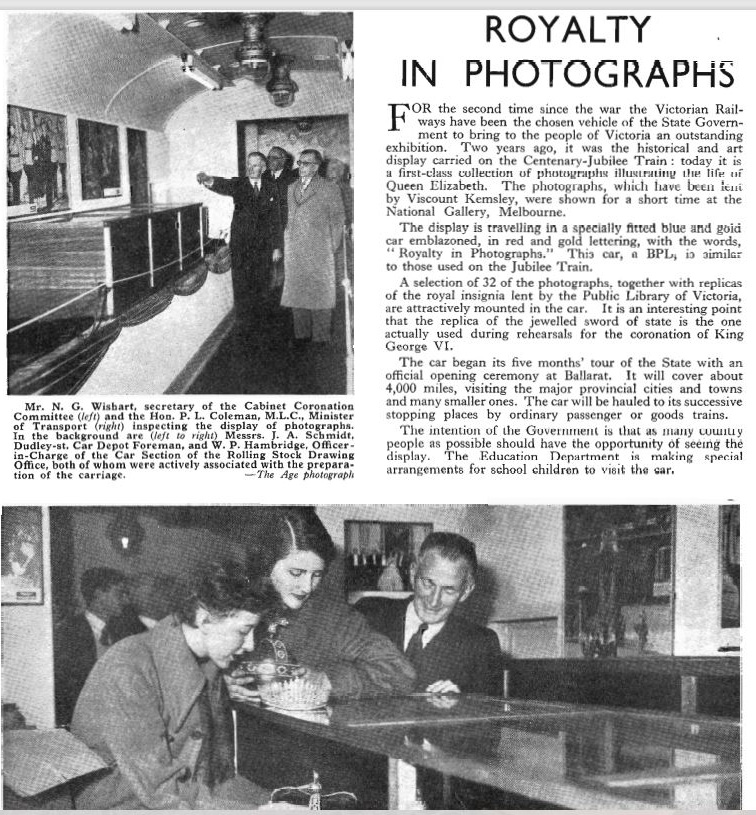
BCPL
In 1928 APL 20 had a Guards compartment added and was designated as a rail-motor trailer; MT 25. In 1940, the car was recoded to BCPL 1 and was the only BCPL car until 1966. These composite cars also had some variations:
1. BCPL 1 & 2 had the van compartment at the number one end, all the others had it at the number two end.
2. BCPL’s 2 to 29 had a small guards compartment only. Numbers 1, 30, 31 & 32 were provided with a larger van-goods area.
3. BCPL's 2, 6, 24 & 25 have the Guards door on the left of the van area on at least one side, when viewed from the outside.
All others identified, (with the small van), have the door on the right. D = Door Type; h = hinged, sl = sliding
W = Number of windows each side in end compartments
S = Side cladding; s = steel sheet, t = timber t&g boarding
P = Plinth board along the bottoms of the sides; y = yes
G = Guards door on left of van area, (normally on right); 1 and/or2 indicates which side of car
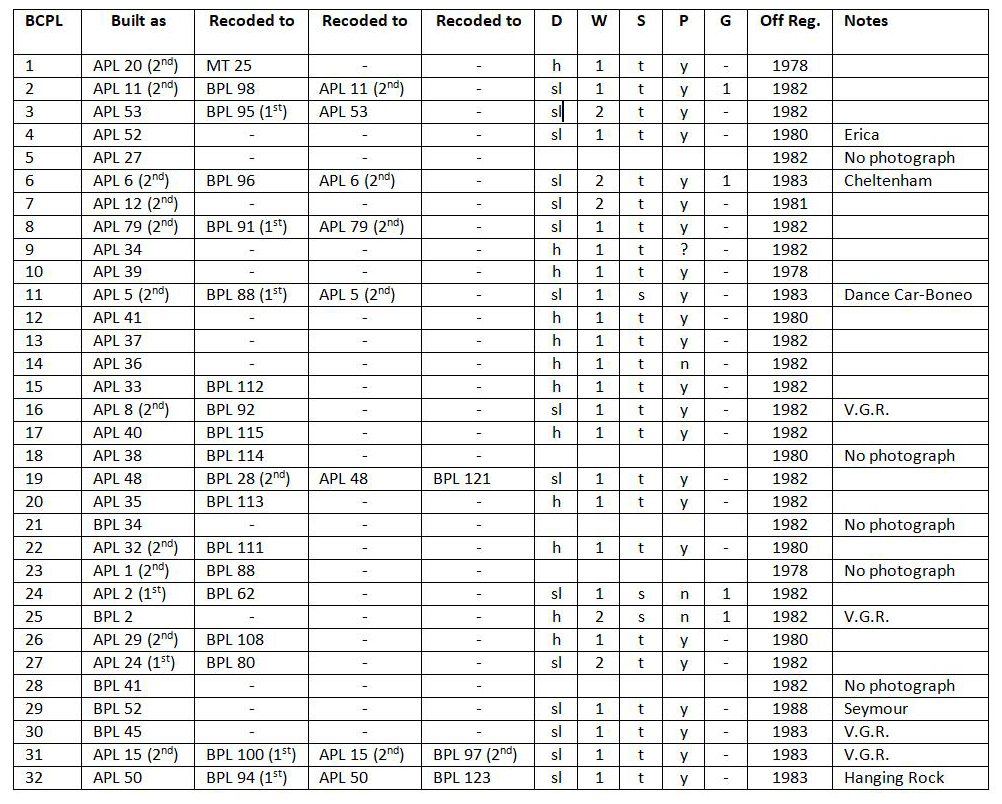
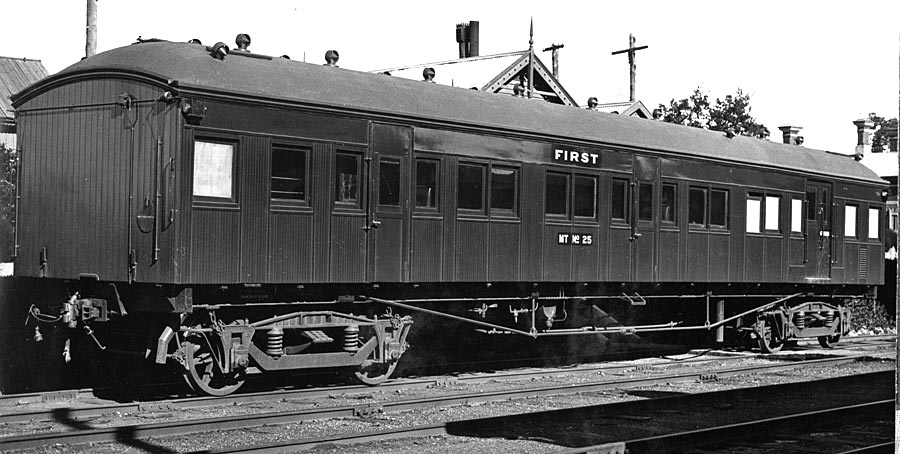
ABOVE: MT 25 was recoded from APL 20, at which time it was equipped with a guards compartment, in 1928, it lasted until 1940 when it was recoded to BCPL 1 (BELOW) At least 2 photos exist of this car attached to RM 55, at the time RM 55 was all 2nd class and as can be seen, MT 25 was all 1st class. Dedicated PERM/DERM trailers did not arrive until Aug. 1930. Photo date 1928.
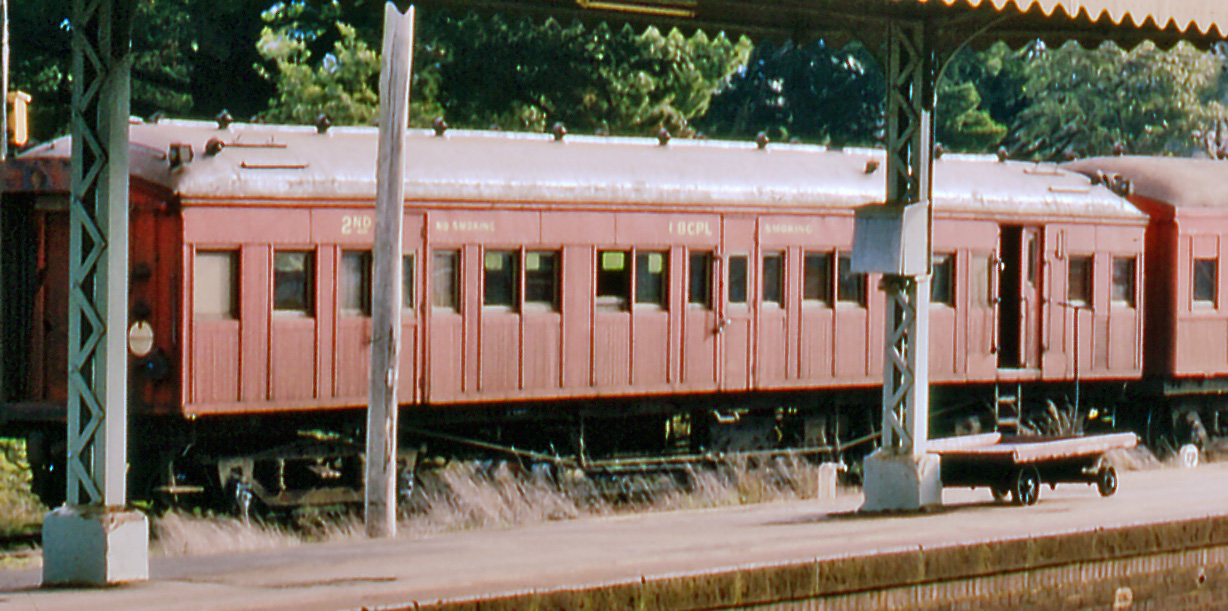
ABOVE: BCPL 1 at Woodend, July 1968. (photo courtesy Neville Gee)
Between 1966 and 1973 a further thirty one 'PL' type cars were equipped with guards compartments and recoded to BCPL, numbers 2 - 32.
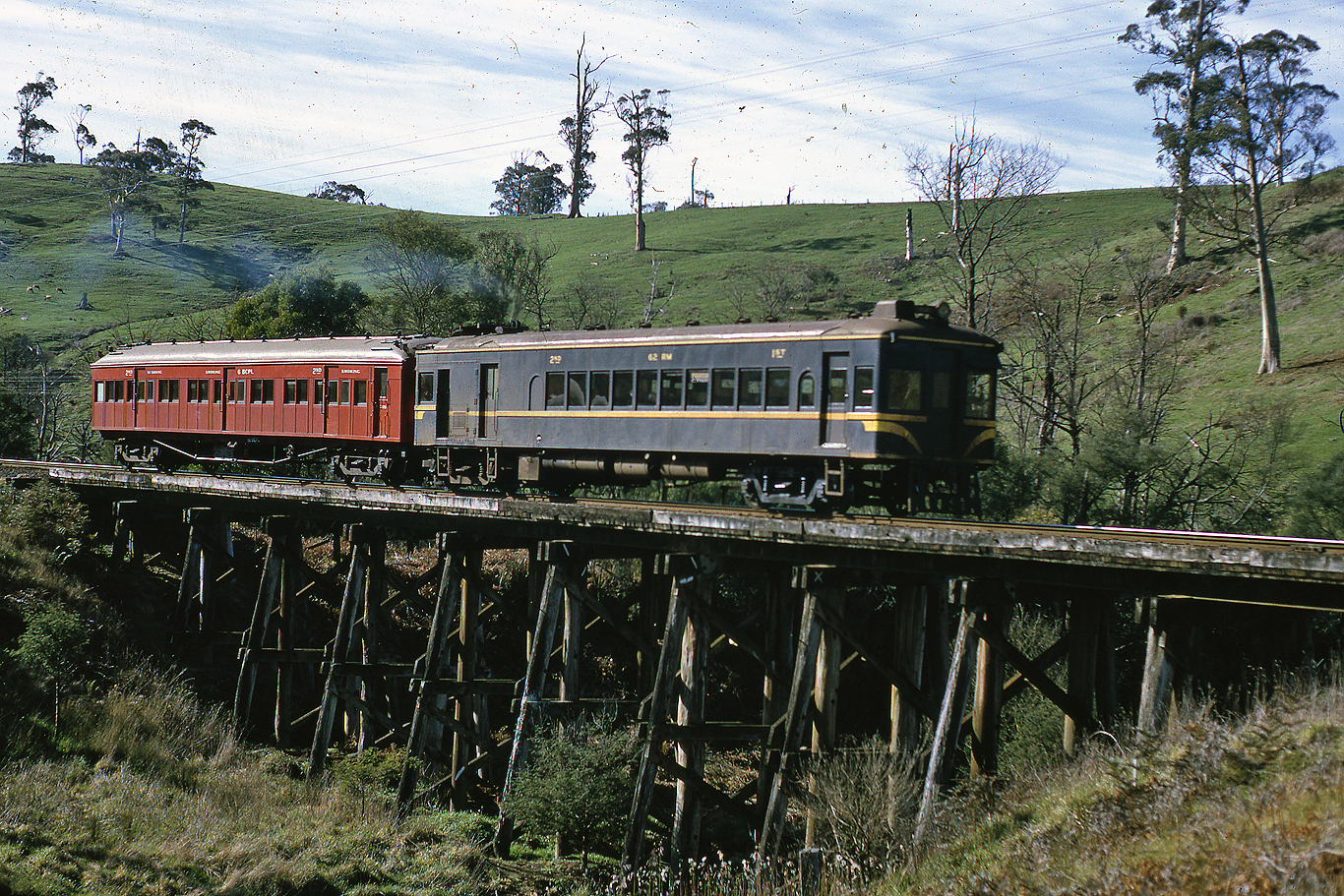
ABOVE: Due to the fact that they had a guards compartment, BCPL's could trail on any train as we can see here, RM 62 and BCPL 6 on a down Leongatha service between Loch and Bena, Sept 1967. (photo courtesy Des Jowett)
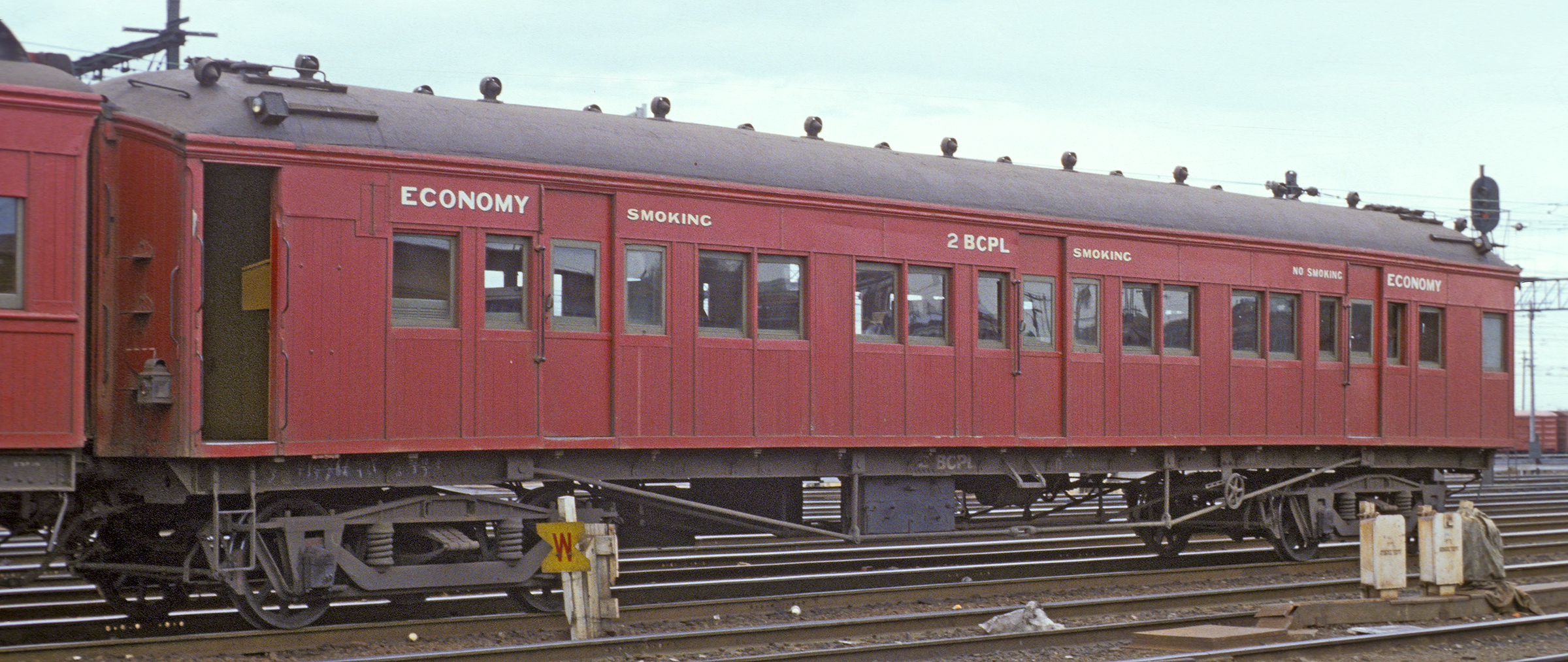
ABOVE: BCPL 2 at Spencer St, Oct 16 1978. (photo courtesy Geoff Winkler)
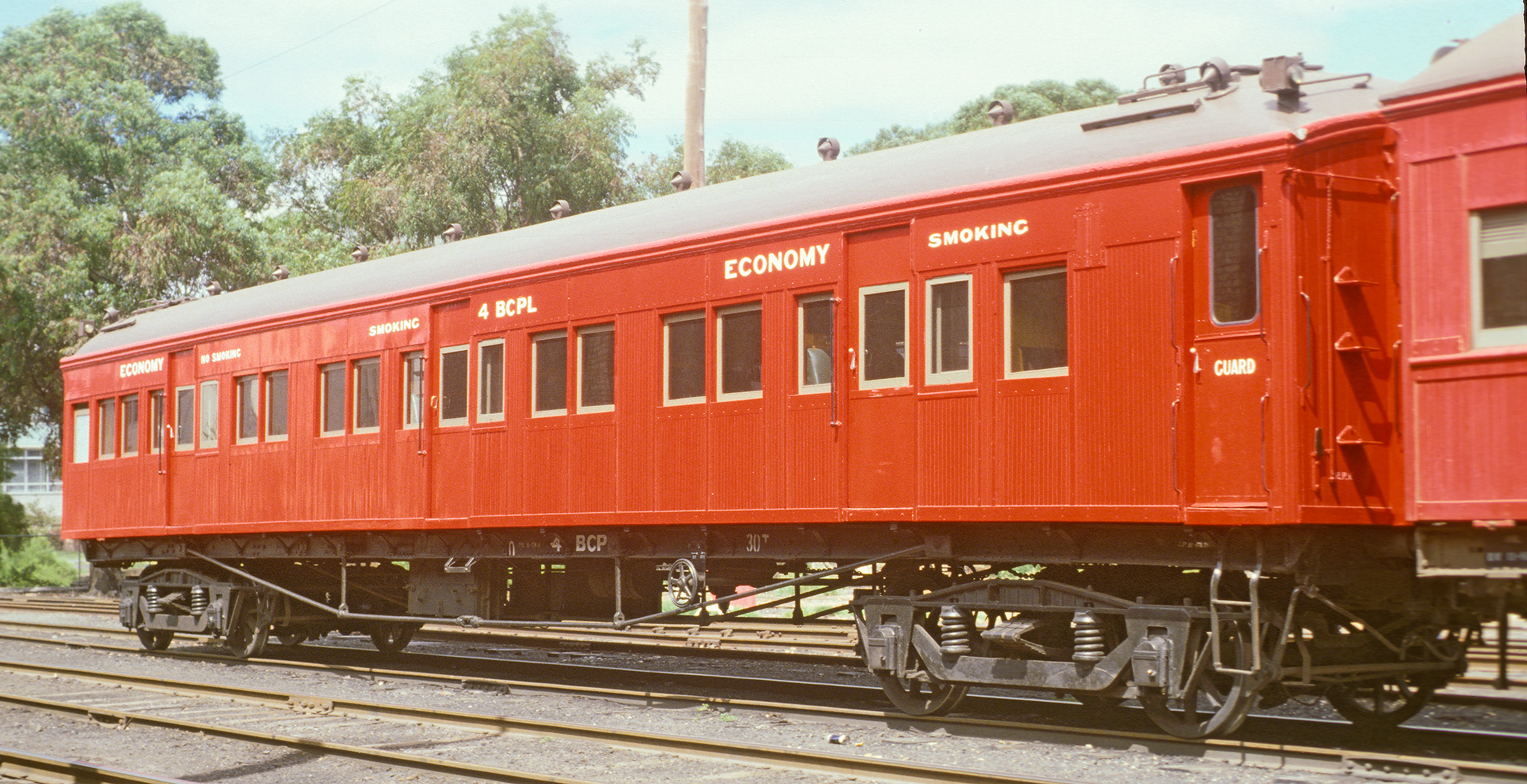
ABOVE: BCPL 4 at Geelong, Jan 13 1979. (photo courtesy Geoff Winkler)

ABOVE: BCPL 6 at Geelong, Sep 2 1978. (photo courtesy Geoff Winkler)
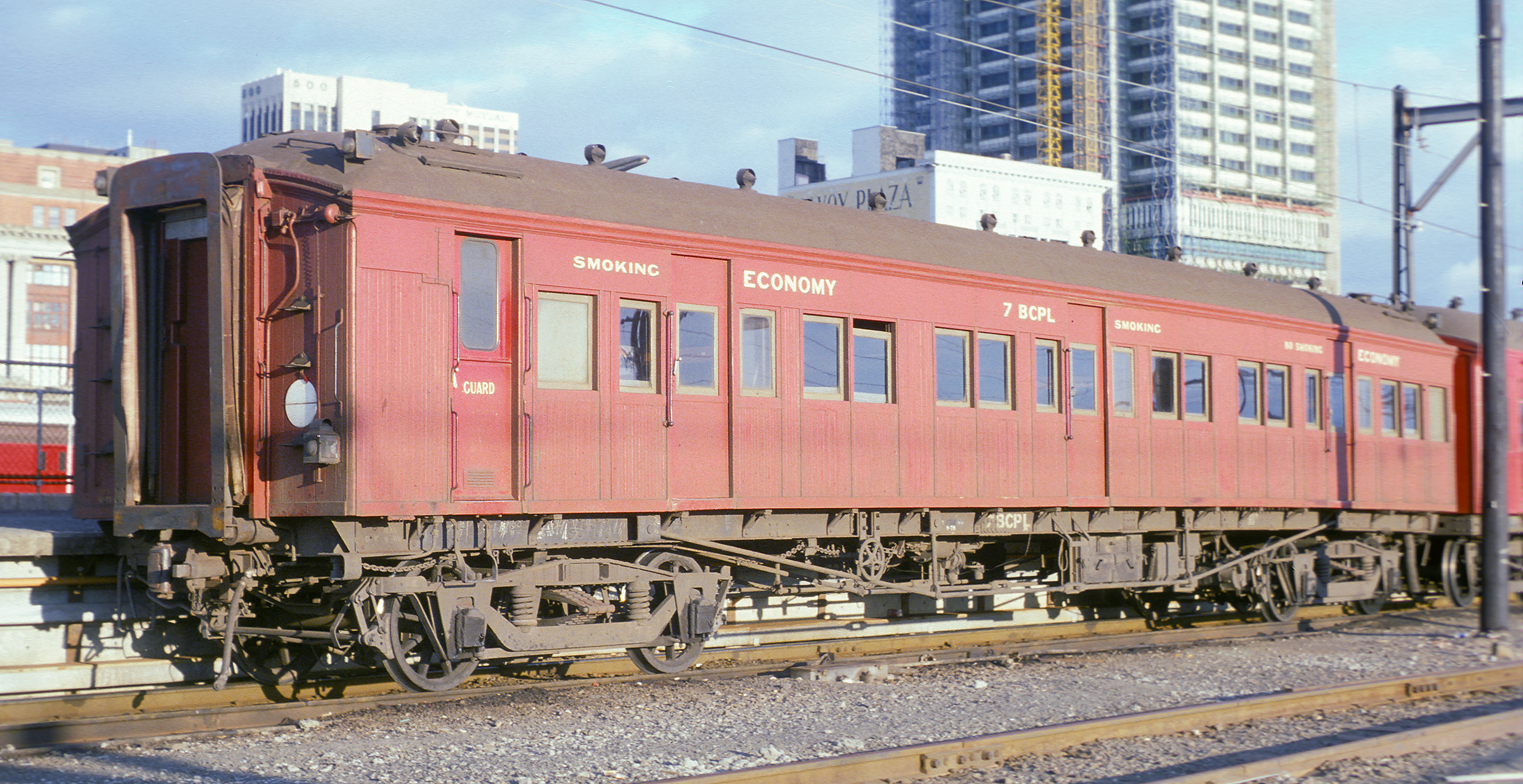
ABOVE: BCPL 7 at Spencer St, Dec 9 1978. (photo courtesy Geoff Winkler)
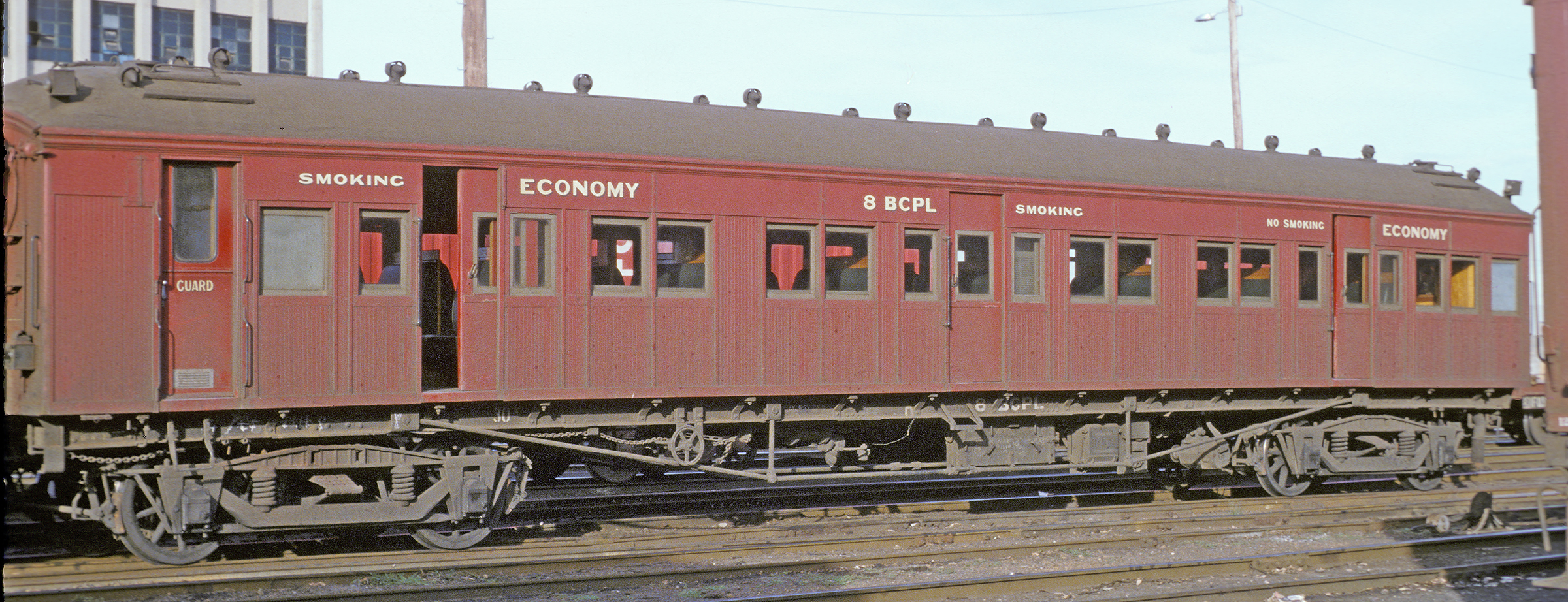
ABOVE: BCPL 8 at Geelong, Apr 30 1978. (photo courtesy Geoff Winkler)
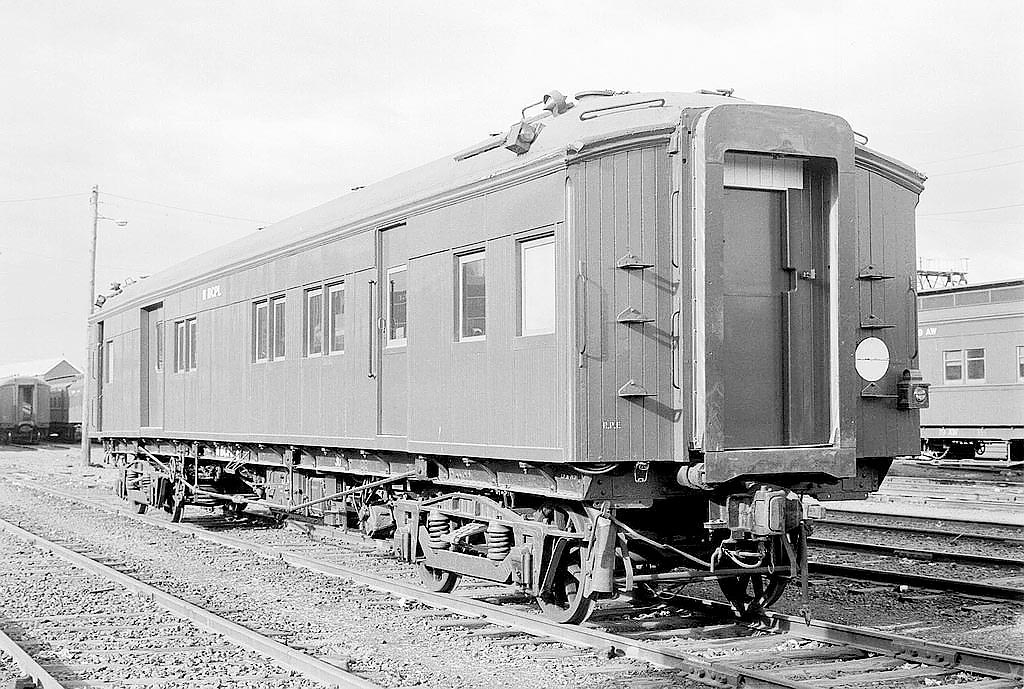
ABOVE & BELOW: In 1976 BCPL 11 was extensively modified to become a dance car on charter trains, most of the seats were removed. (both photos courtesy Rob O'Regan.)
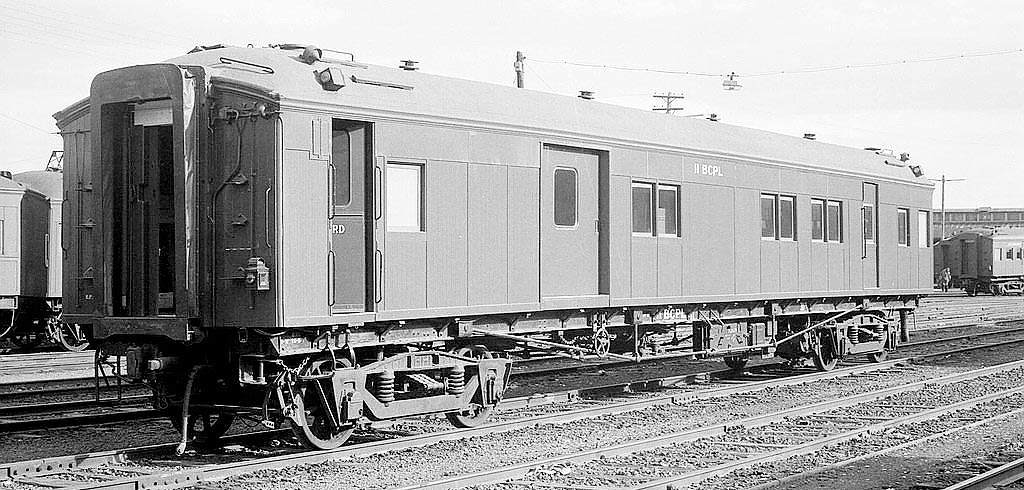
BELOW: The following two photos show the interior of BCPL 11. (photos courtesy Peter J Vincent)
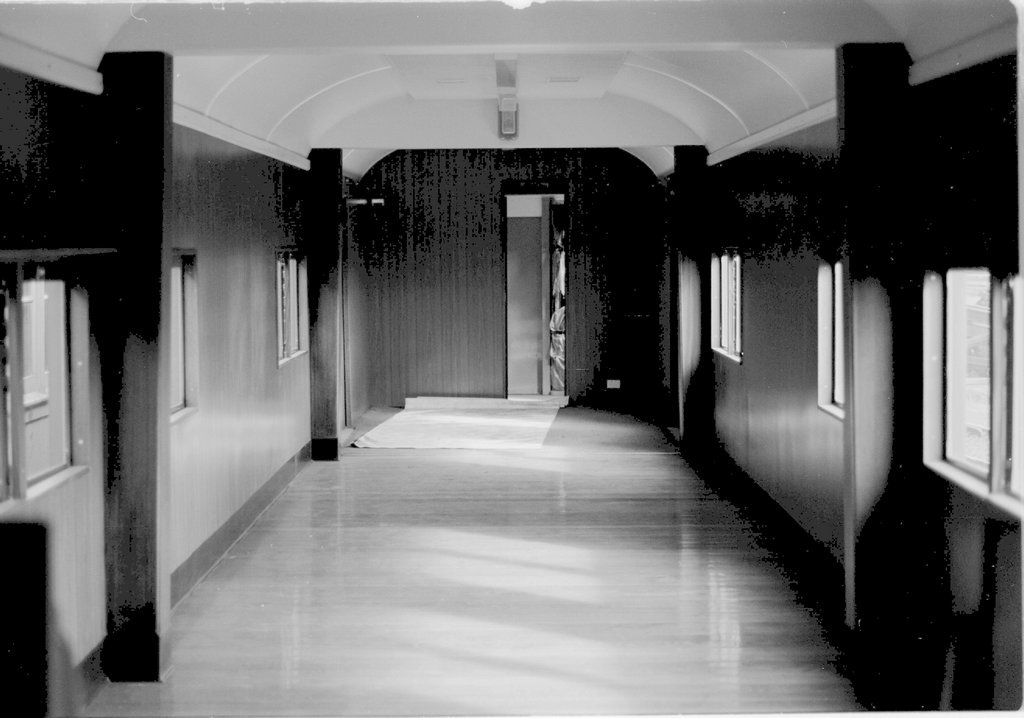
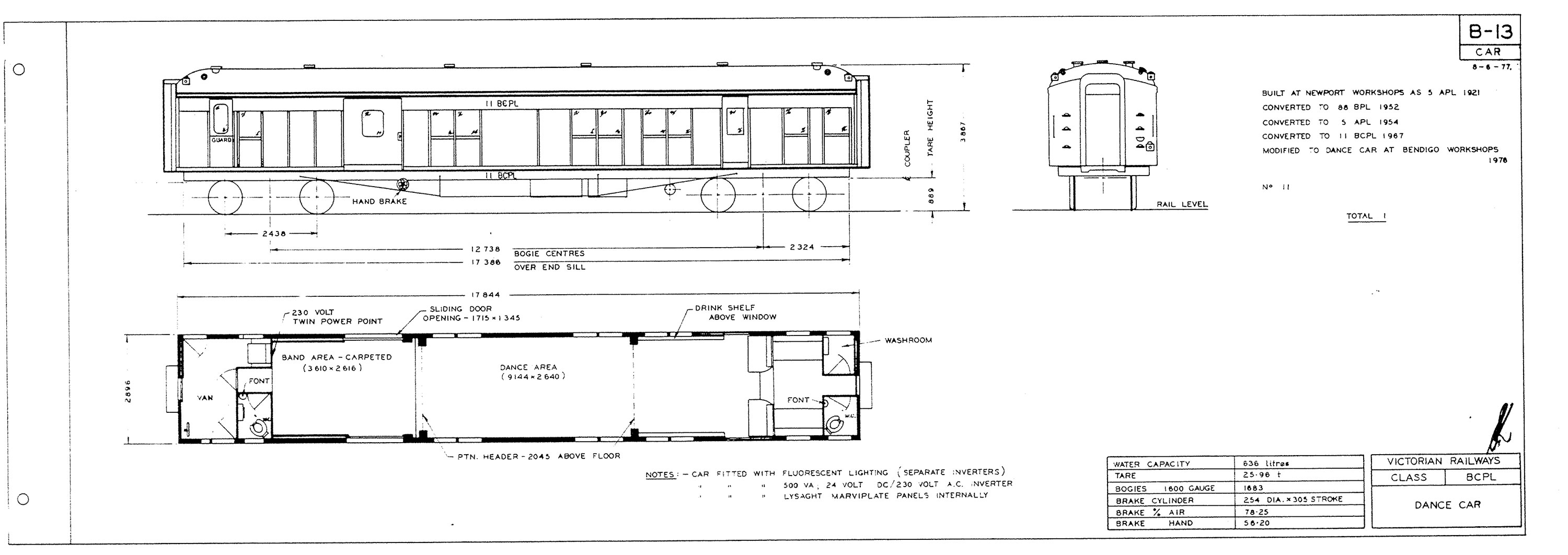
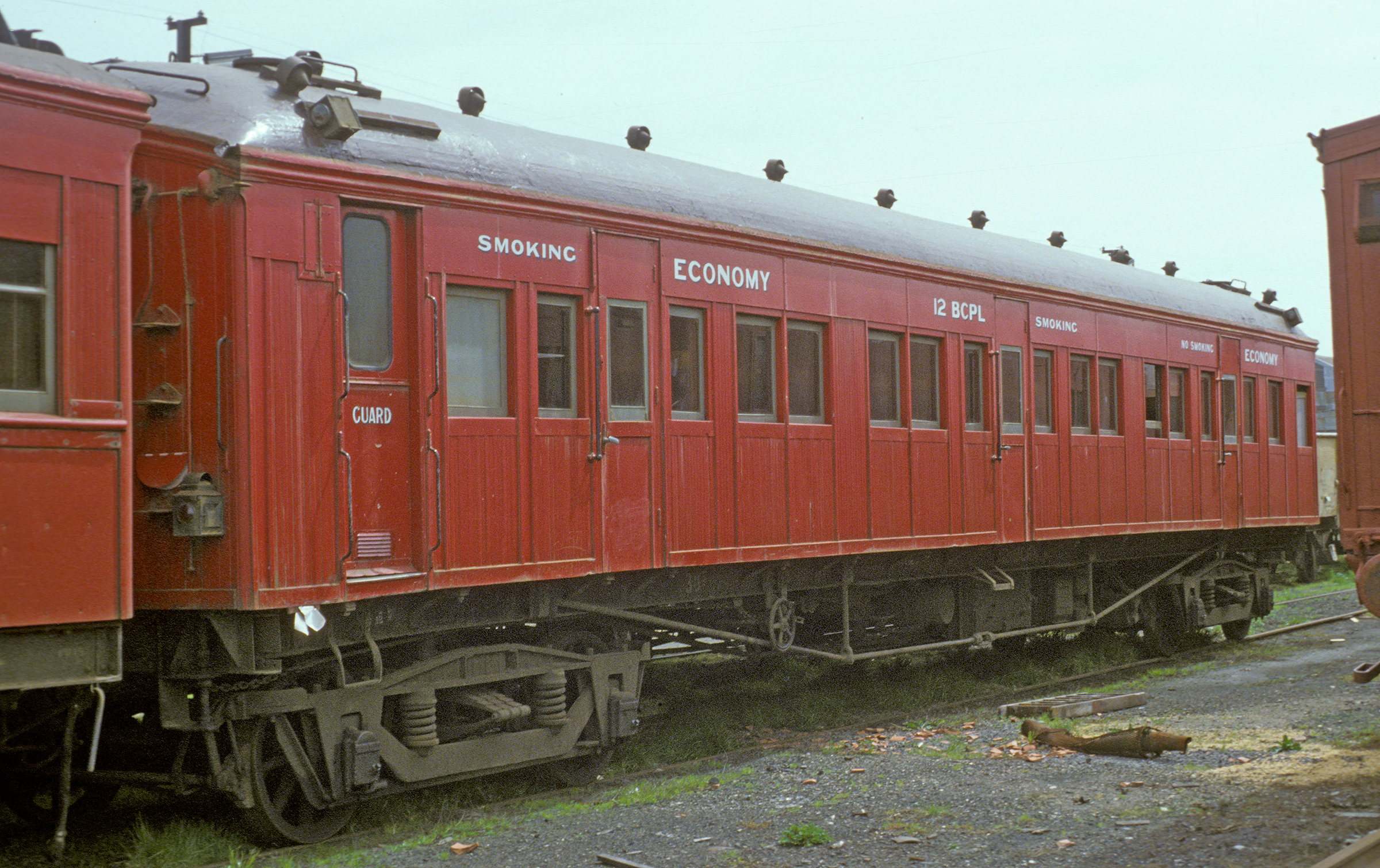
ABOVE: BCPL 12 at Ballarat, Oct 2 1978. (photo courtesy Geoff Winkler)
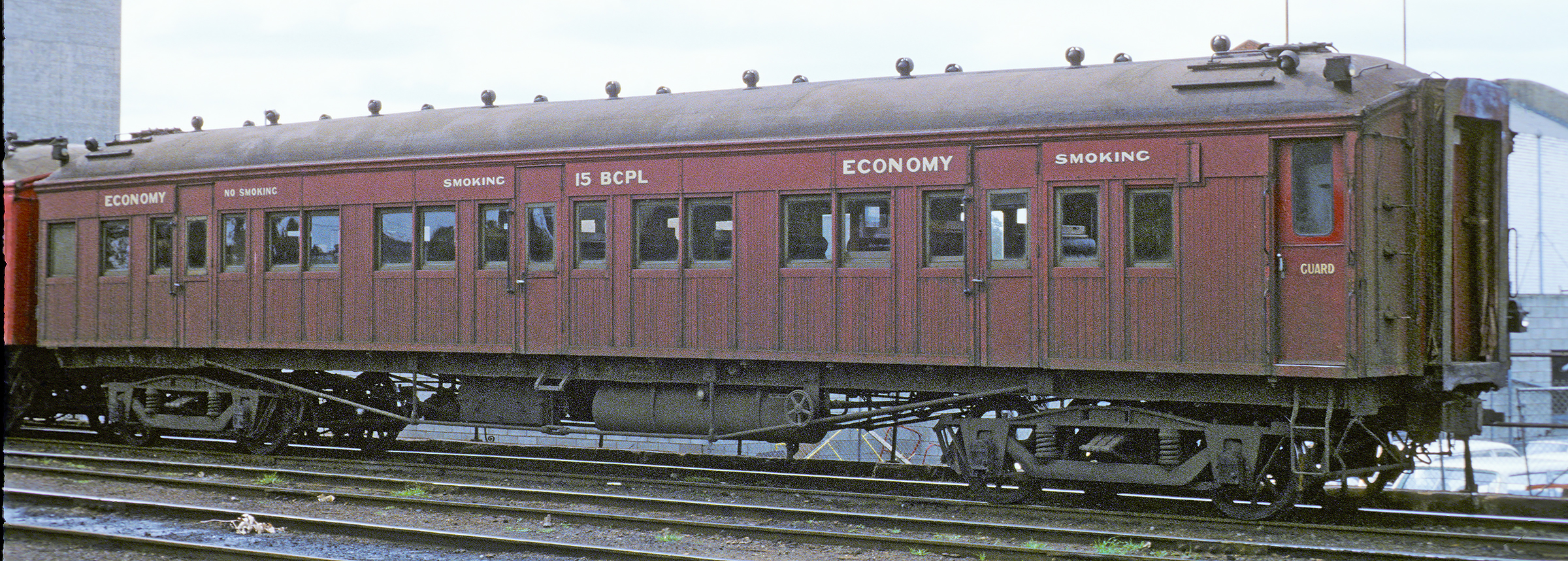
ABOVE: BCPL 15 at Geelong, Apr 29 1978. (photo courtesy Geoff Winkler)
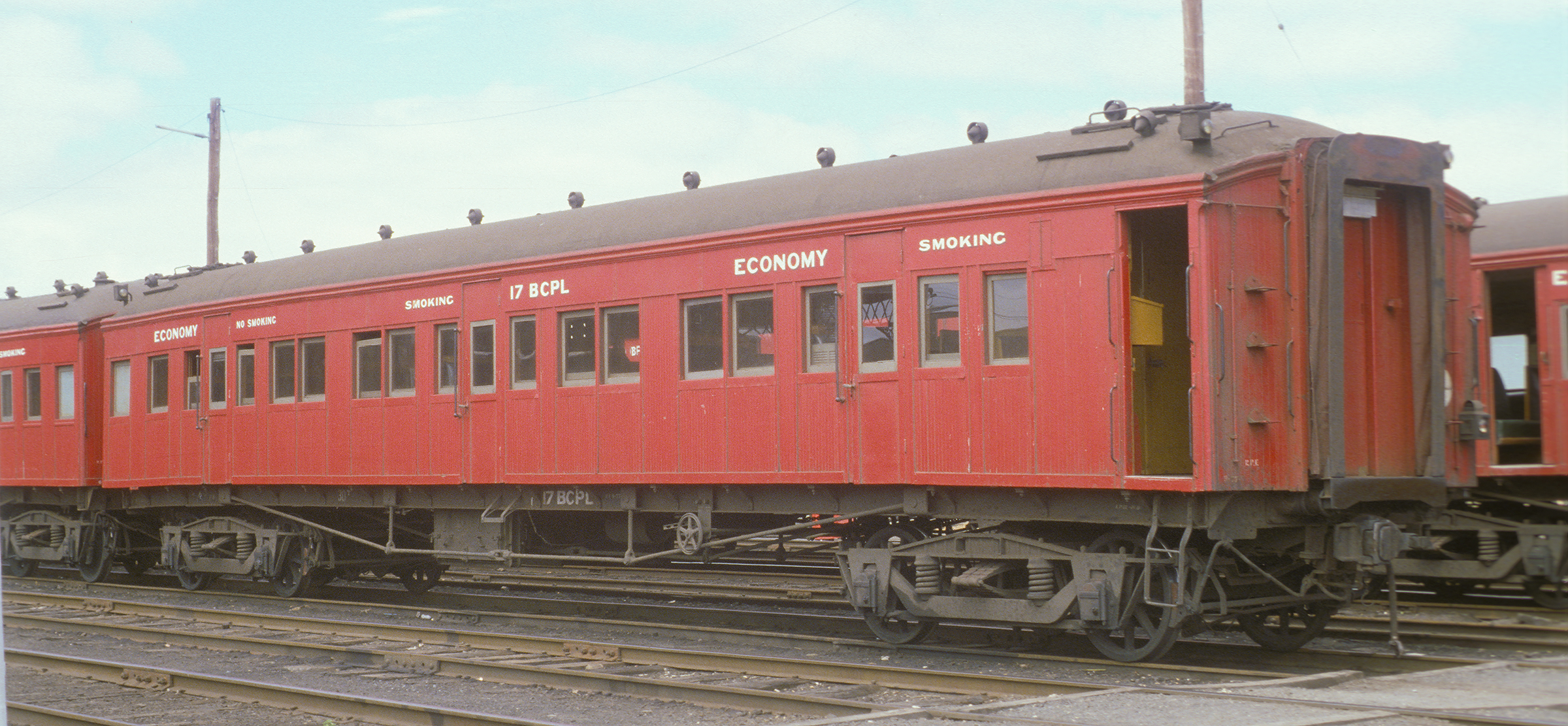
ABOVE: BCPL 17 at Geelong, Jan 13 1979. (photo courtesy Geoff Winkler)
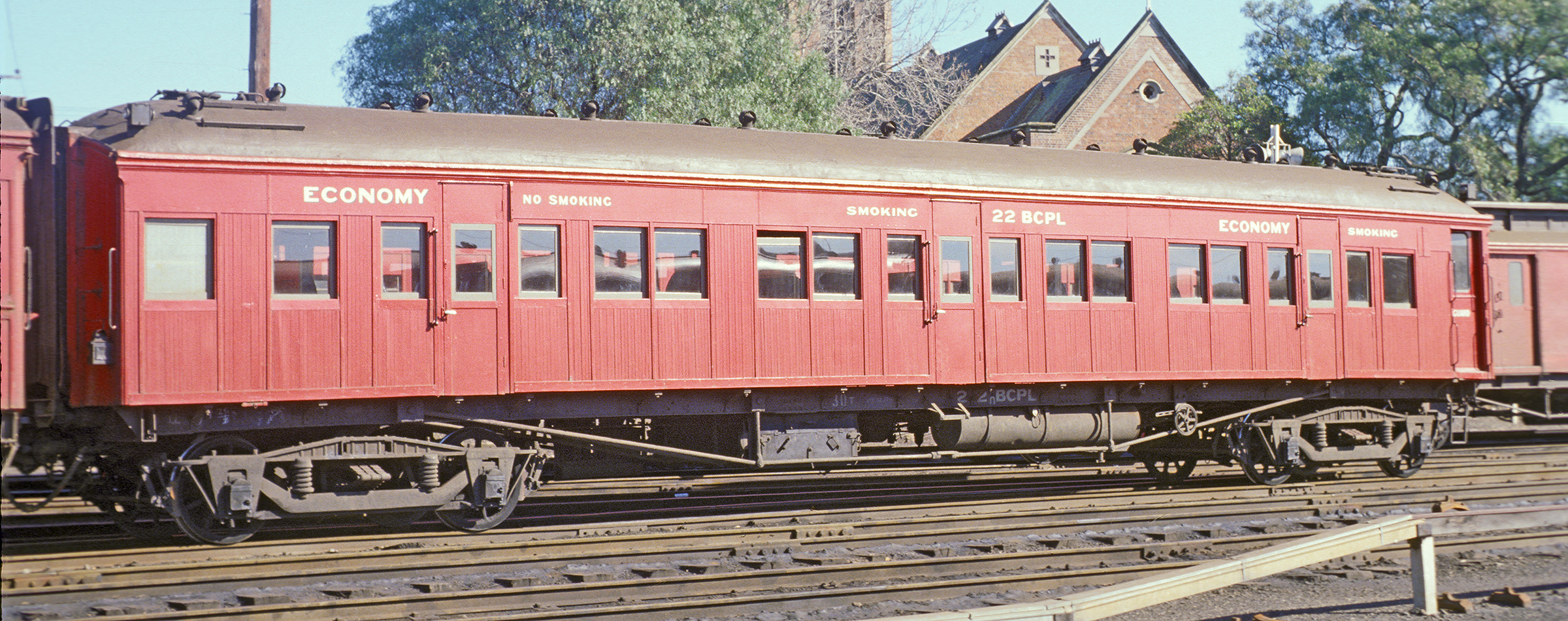
ABOVE: BCPL 22 at Geelong, Sep 2 1978. (photo courtesy Geoff Winkler)
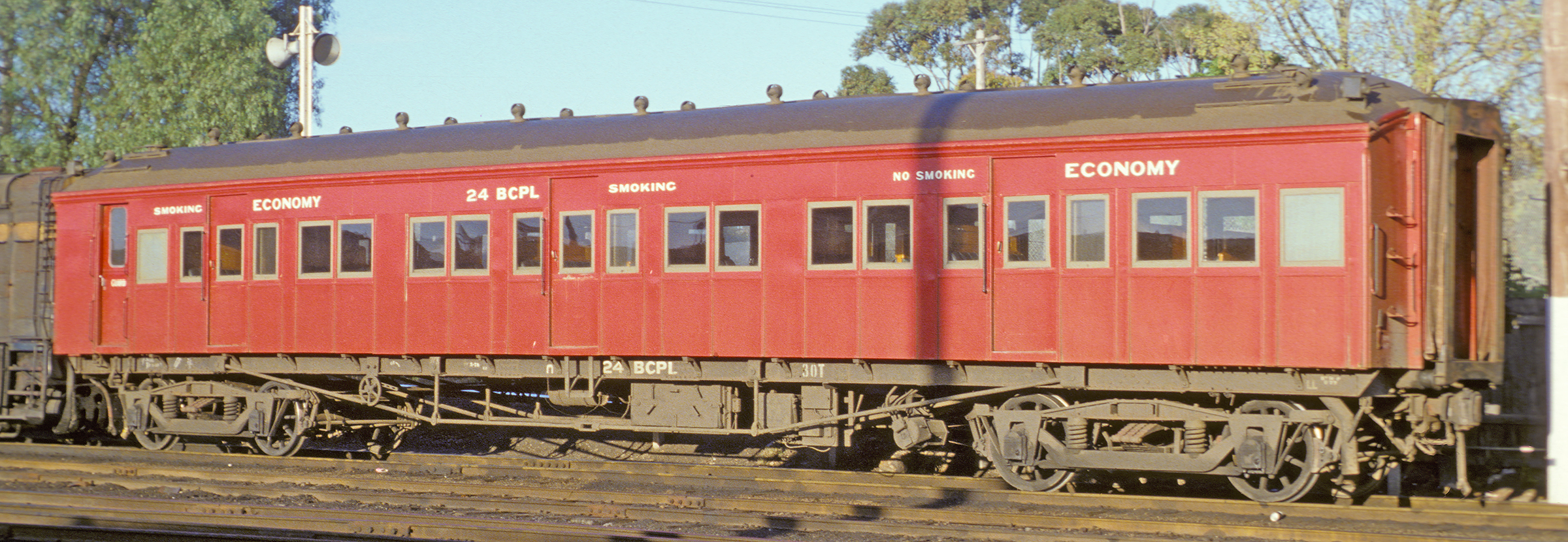
ABOVE: BCPL 24 at Geelong, Sep 28 1978. (photo courtesy Geoff Winkler)
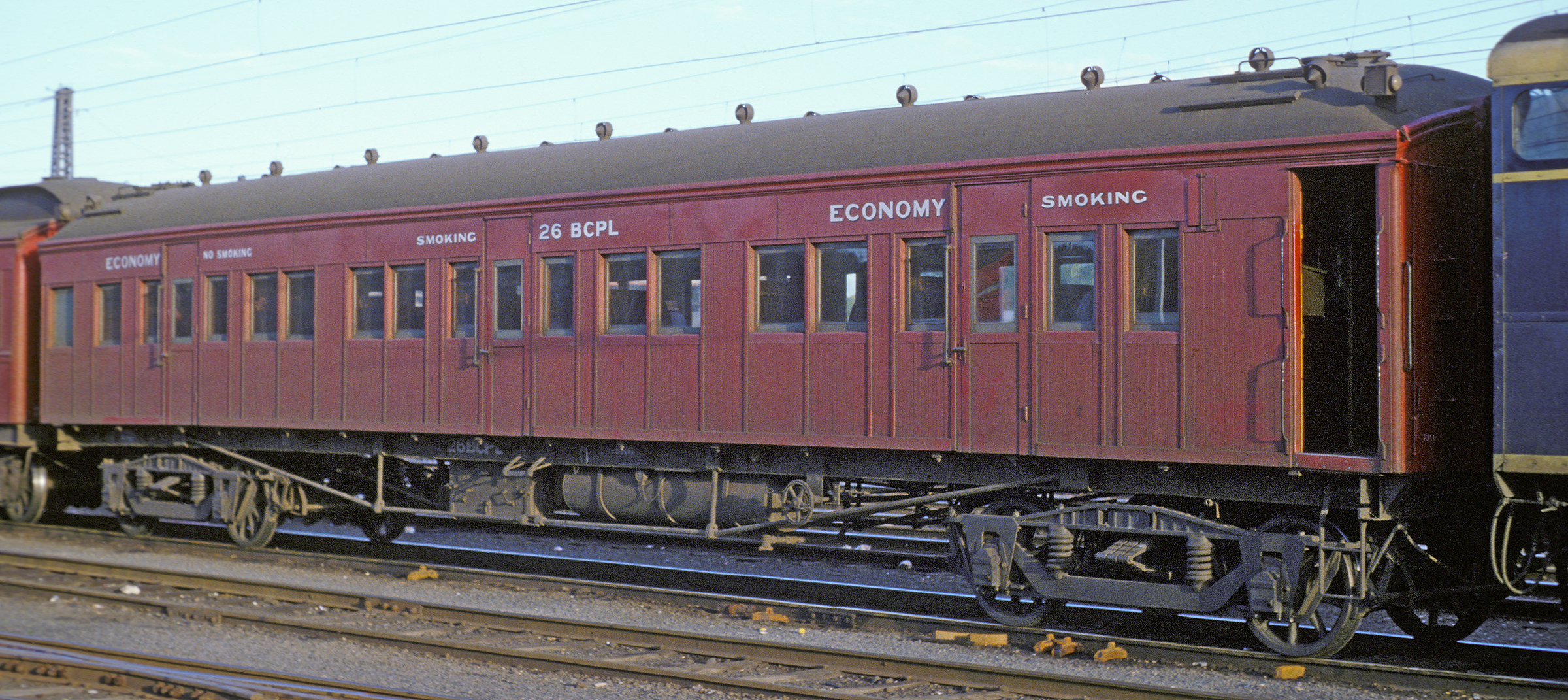
ABOVE: BCPL 26 at Jolimont, Apr 28 1978. (photo courtesy Geoff Winkler)
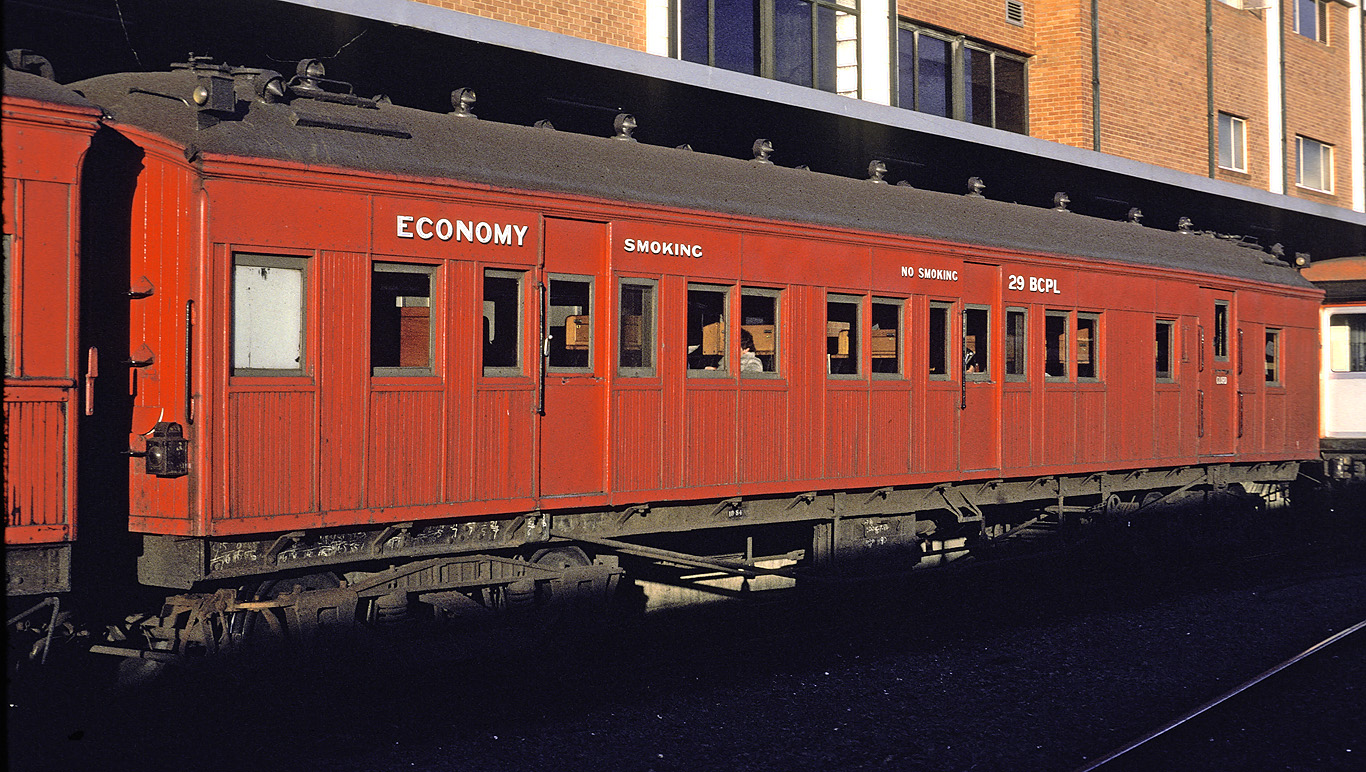
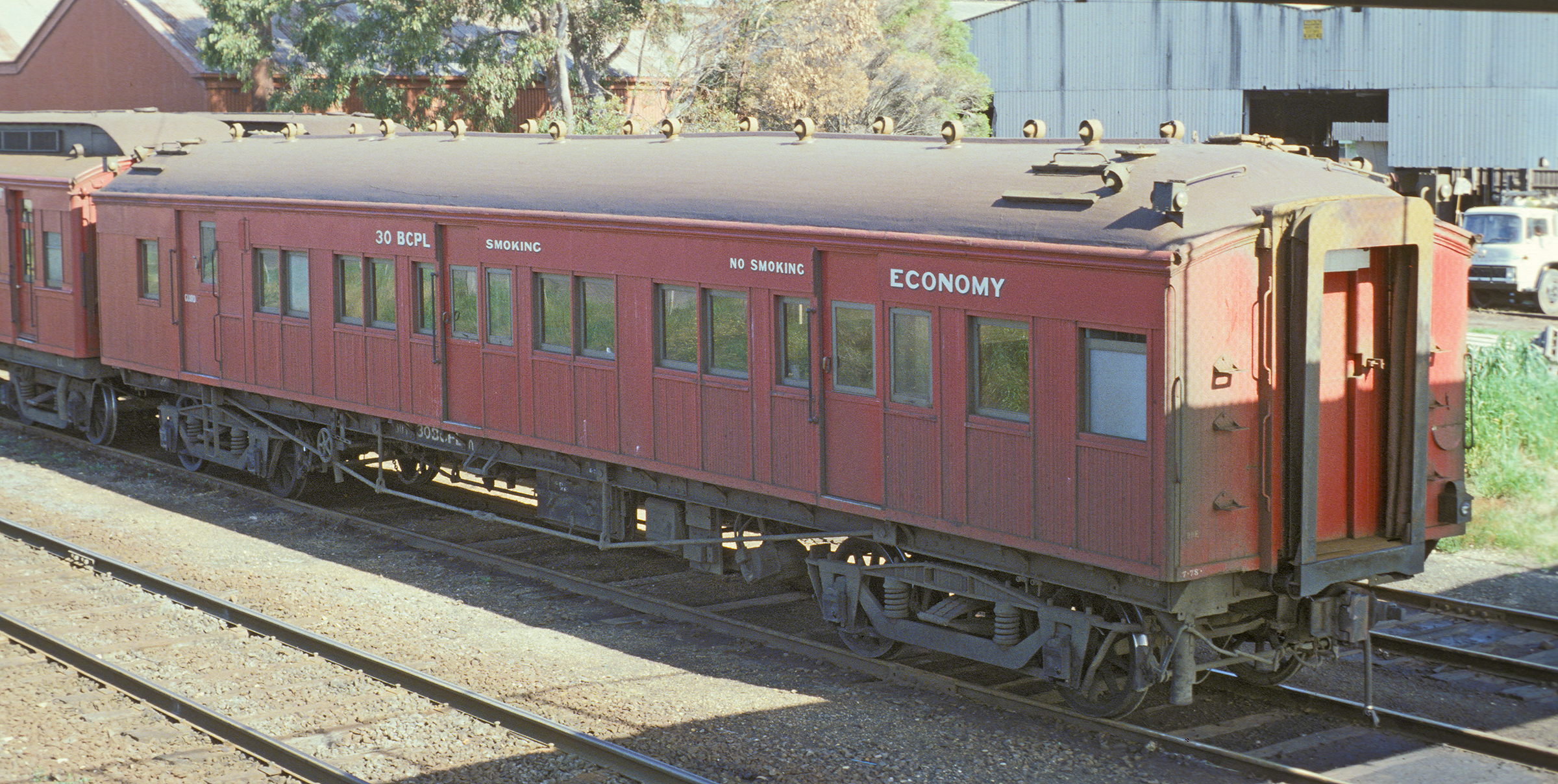
ABOVE: BCPL 30 at South Geelong, Sep 24 1978. (photo courtesy Geoff Winkler)
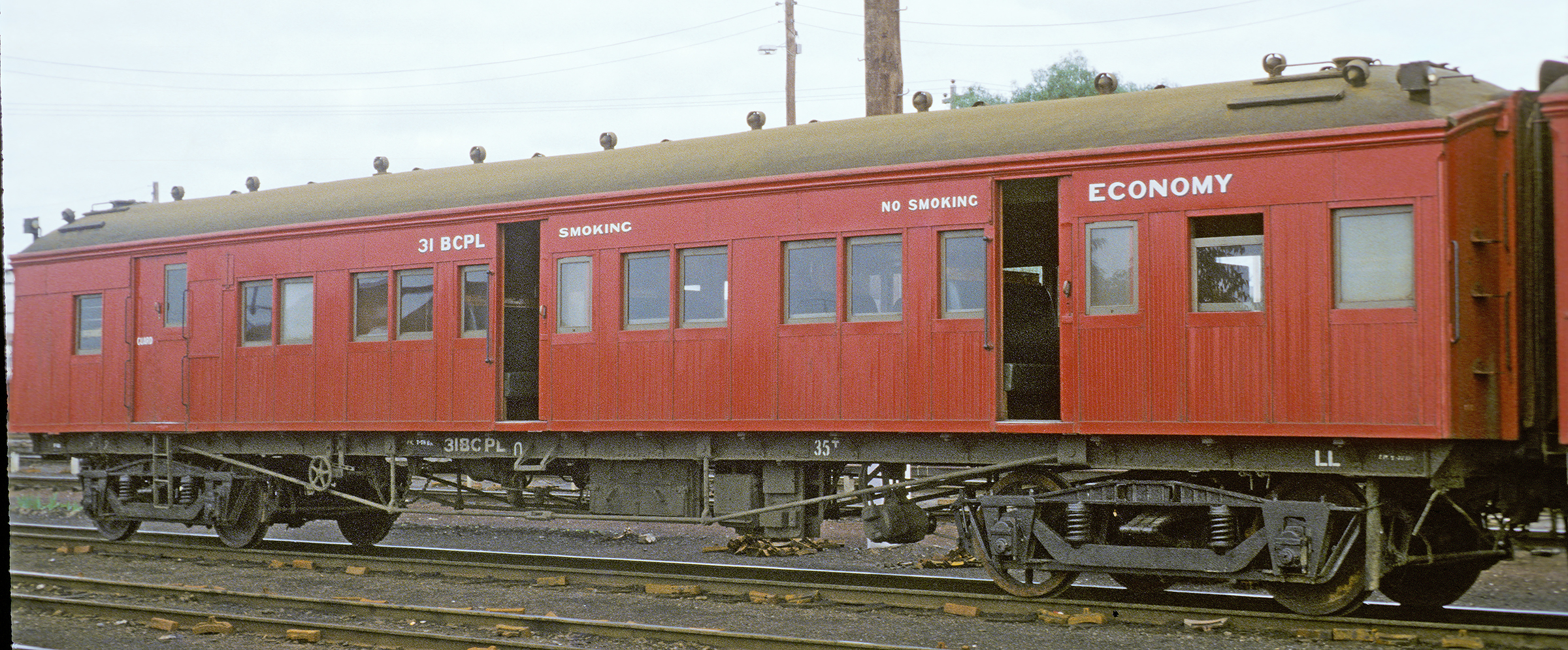
ABOVE: BCPL 31 at Spencer St , Aug 25 1978. (photo courtesy Geoff Winkler)
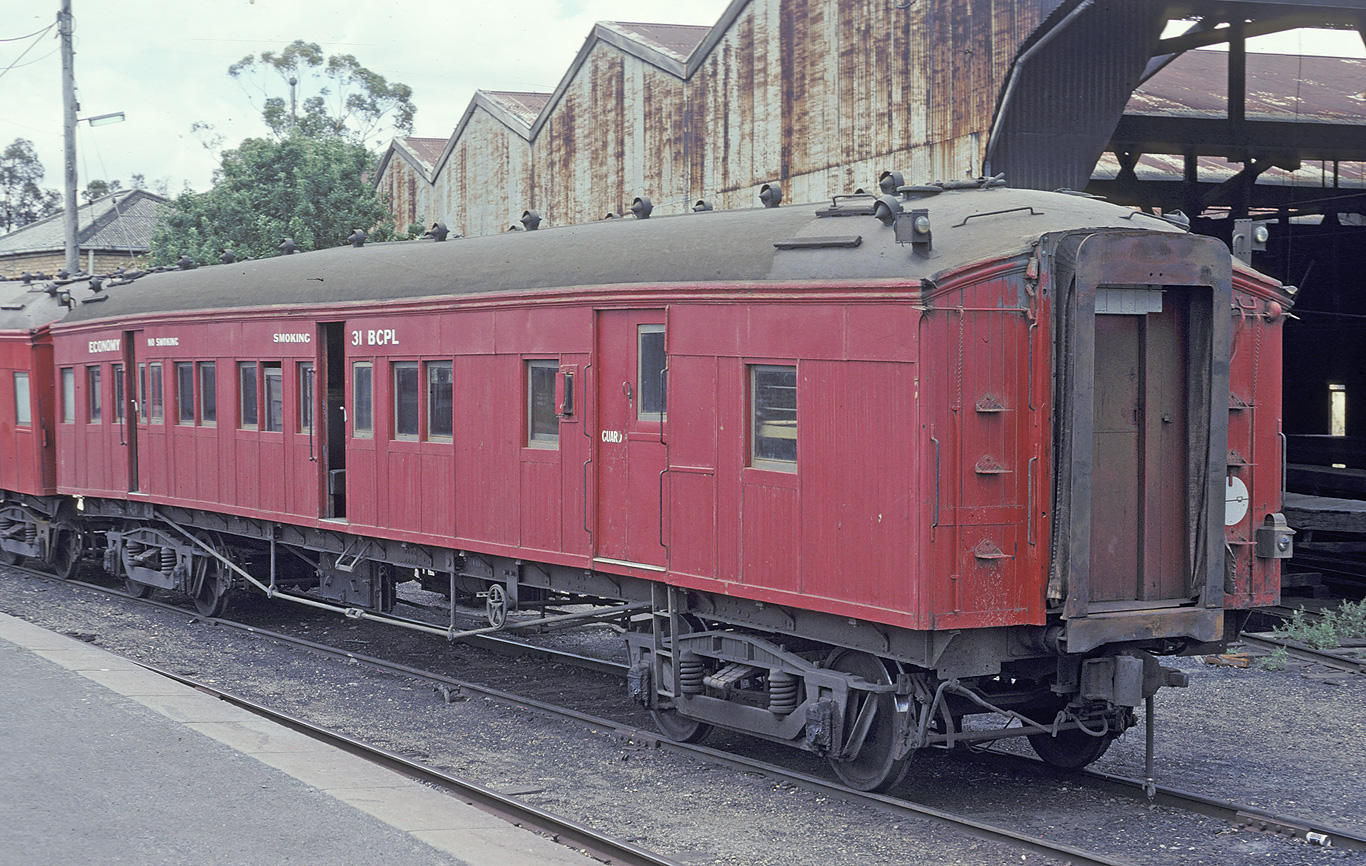
ABOVE: BCPL 31 at Bendigo, 1979.
BELOW: The BCPL's featured this pop out, side periscope to enable the guard to view signals.
